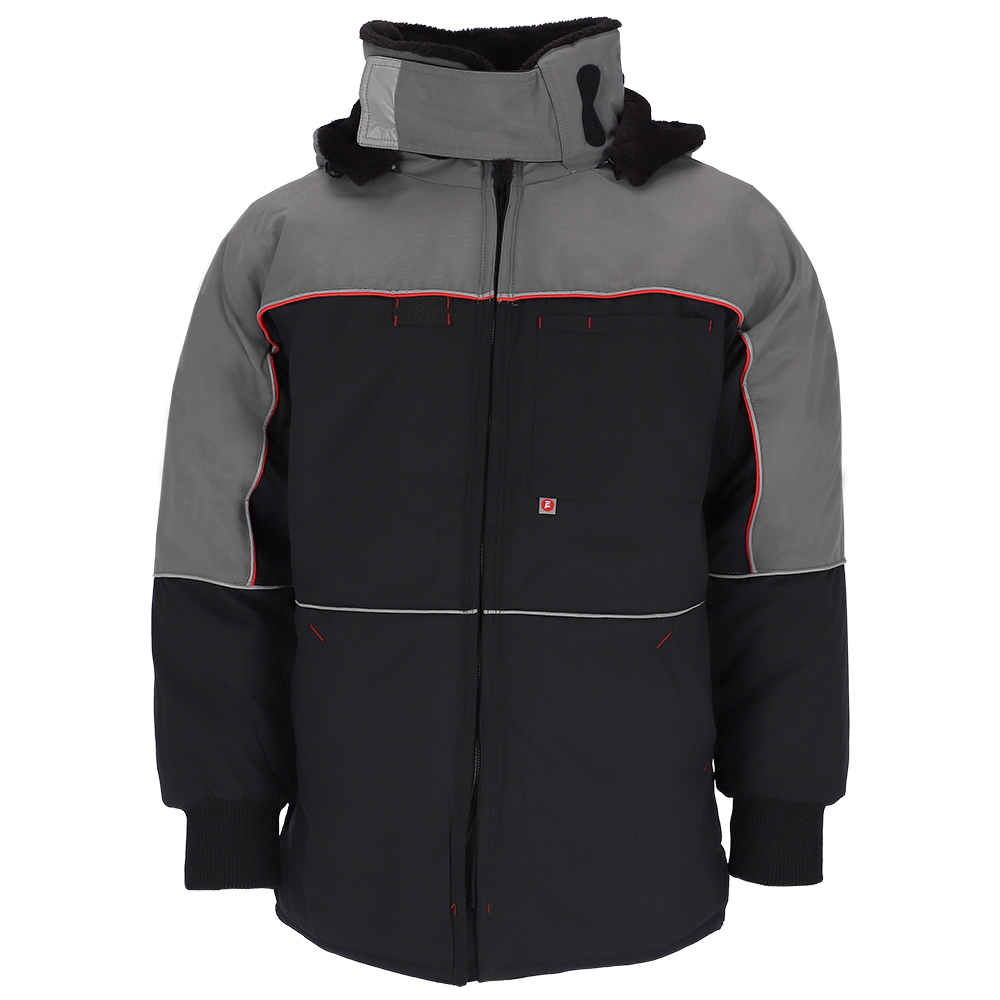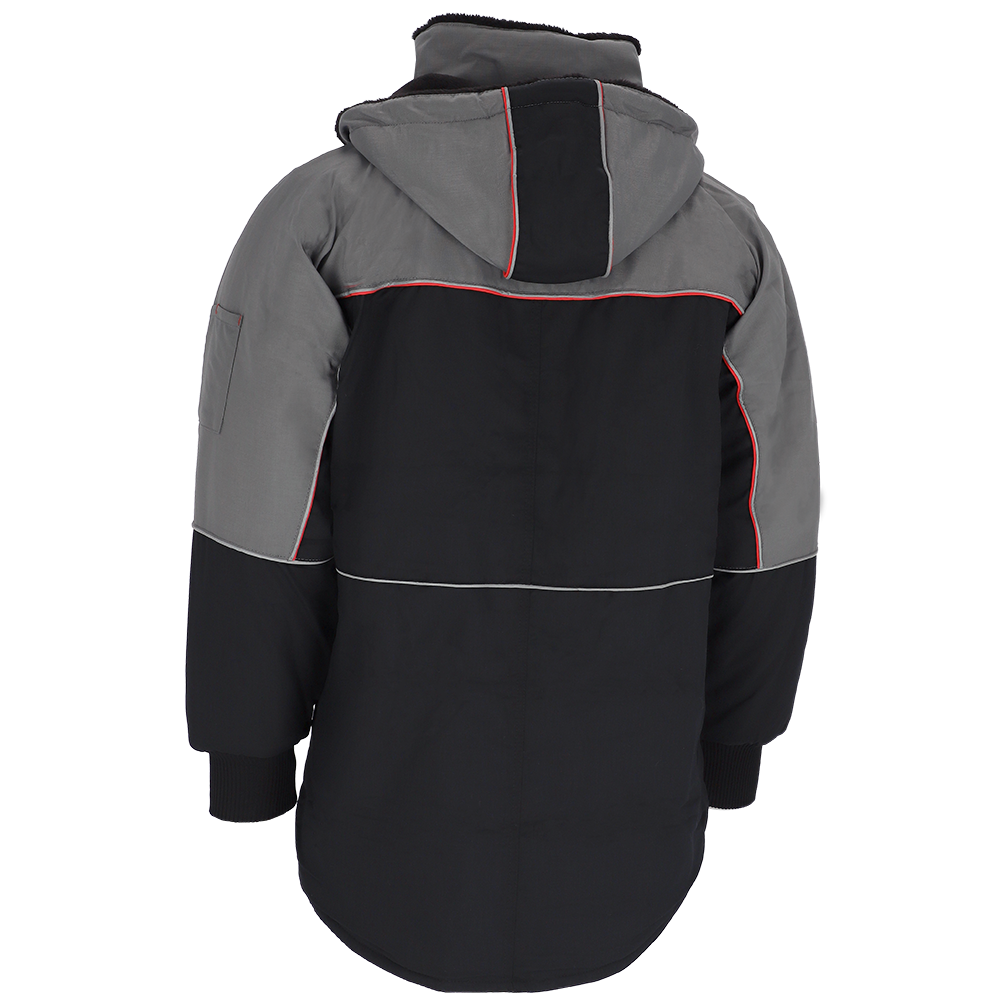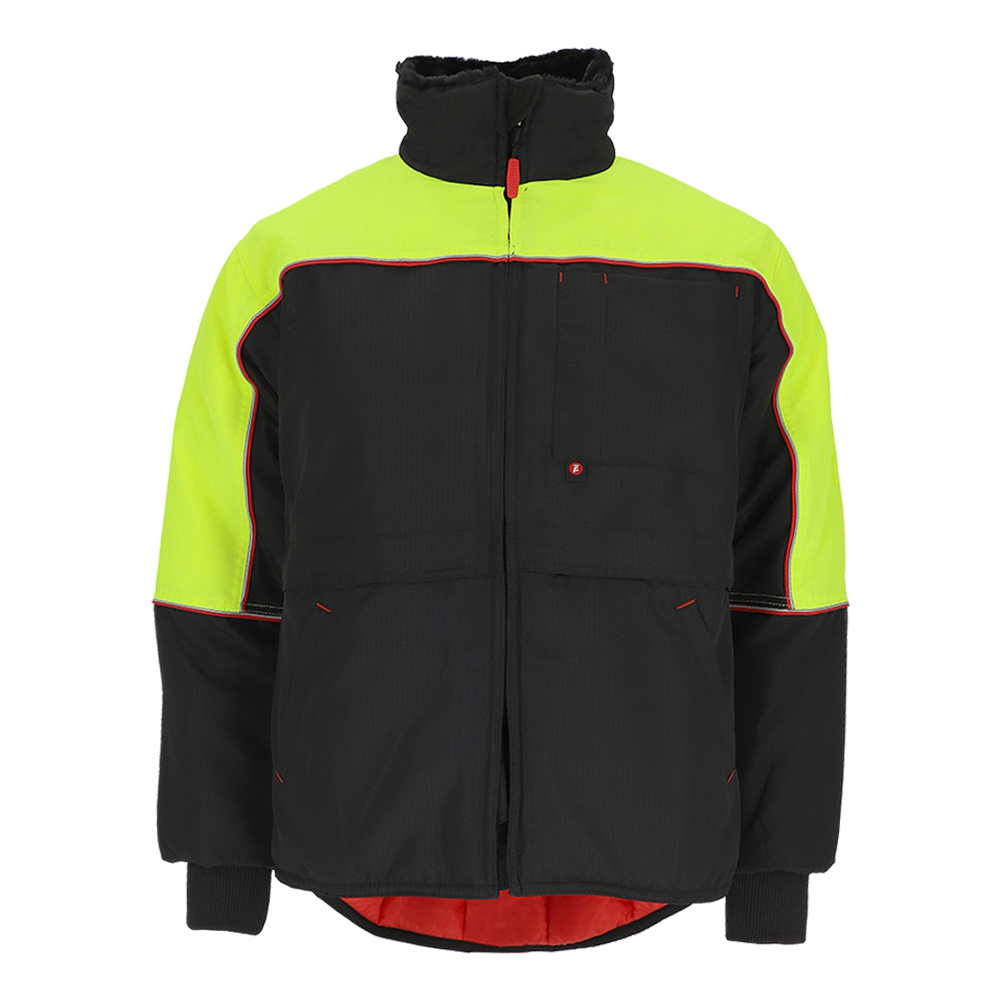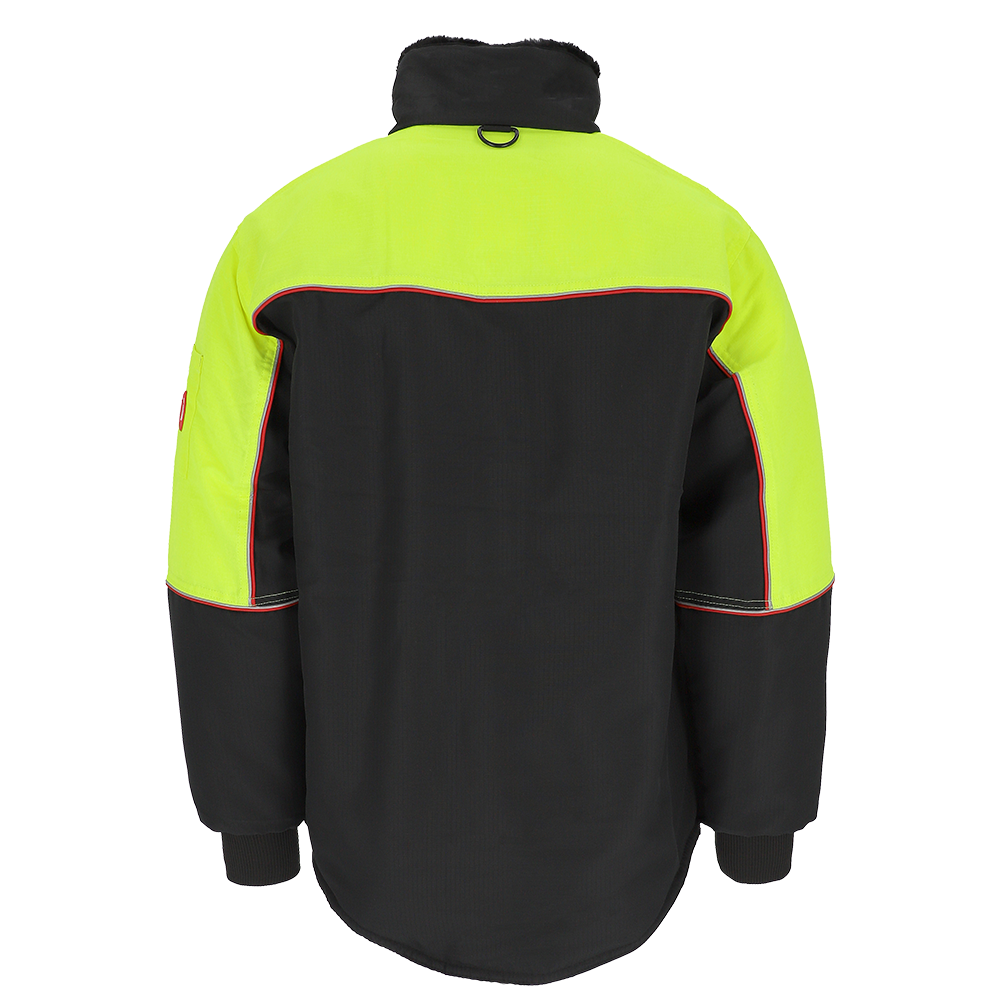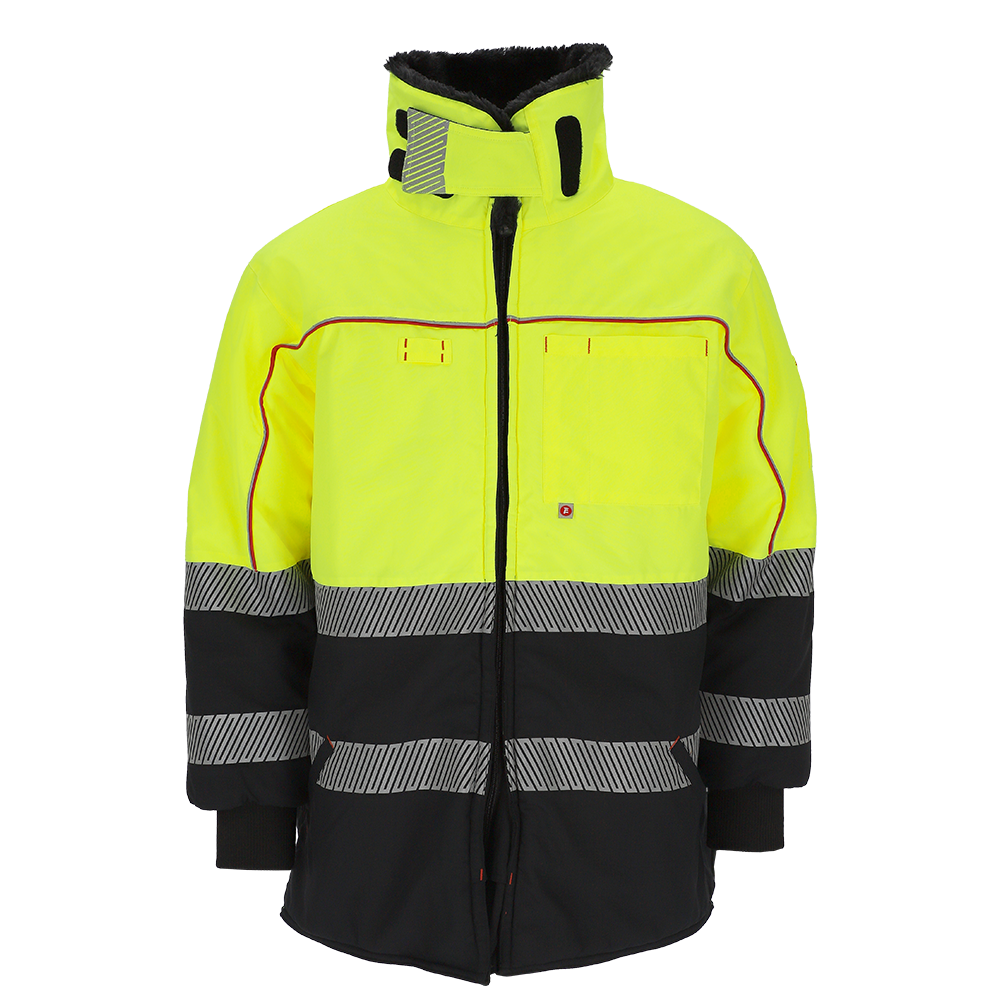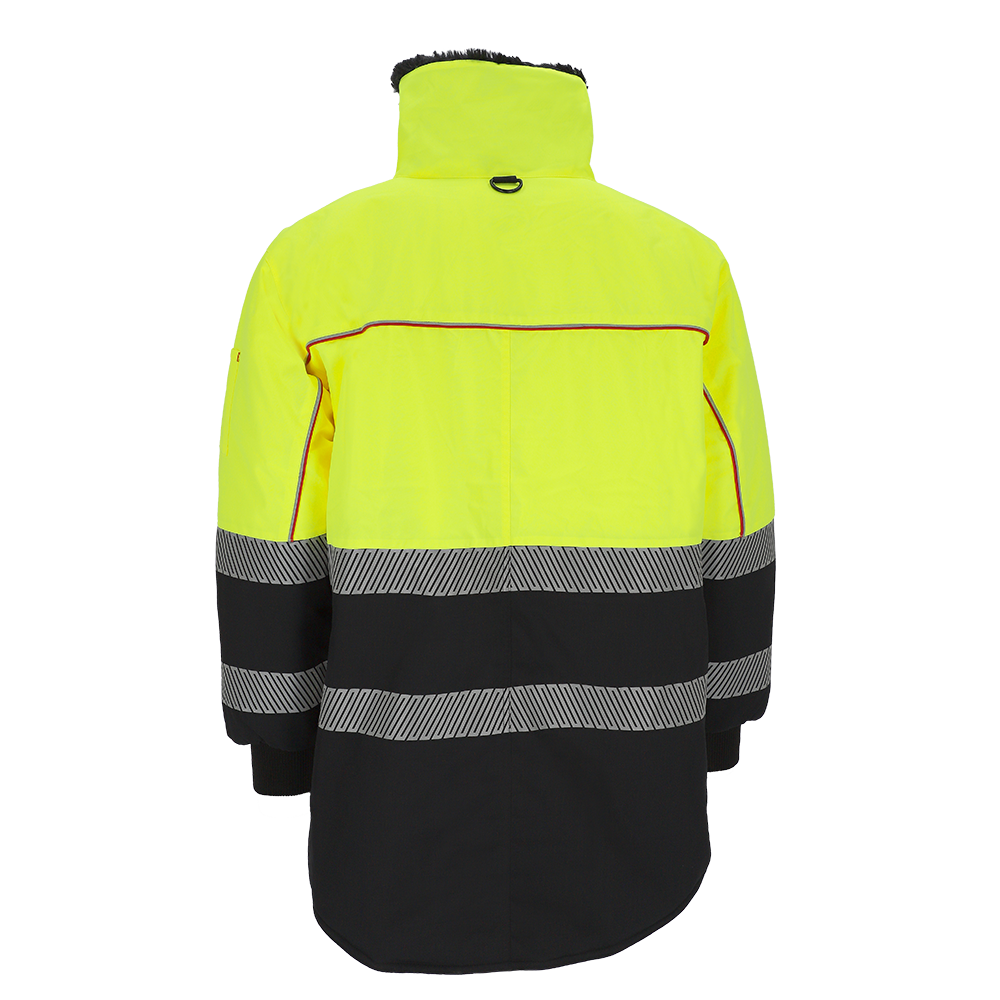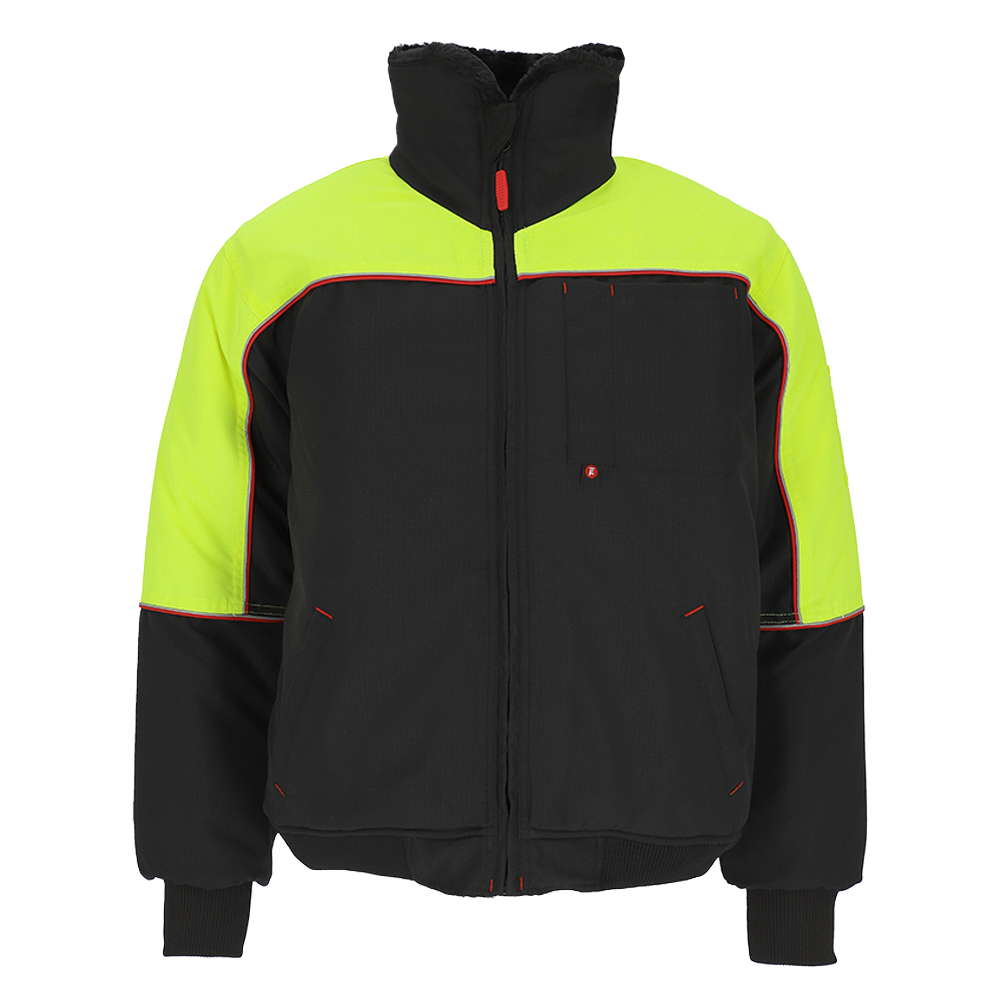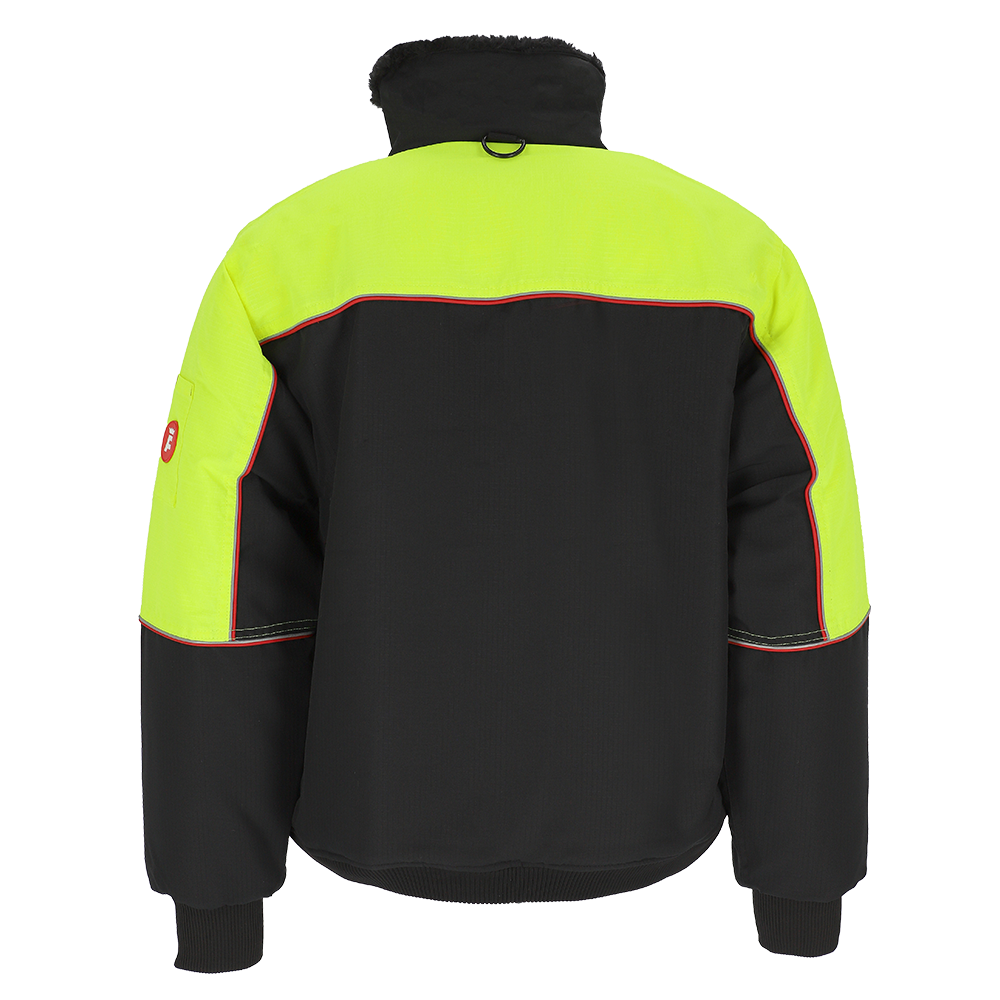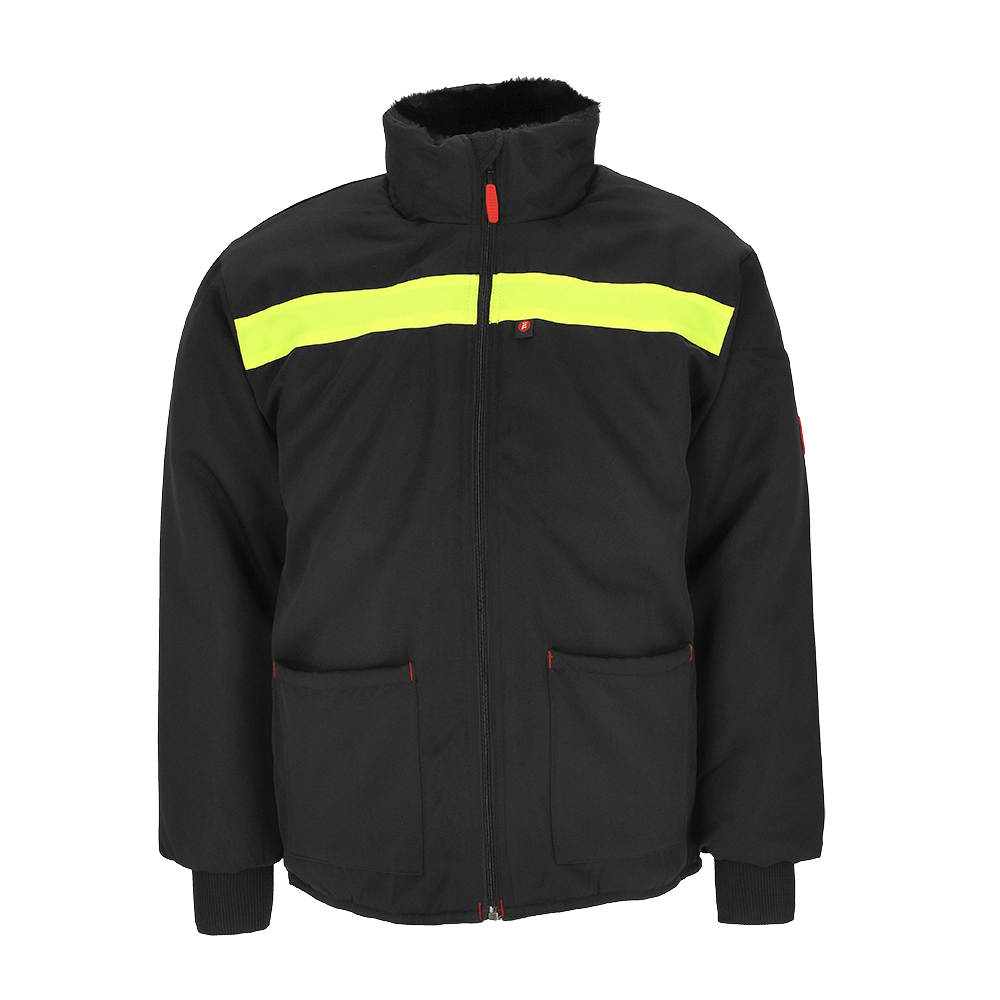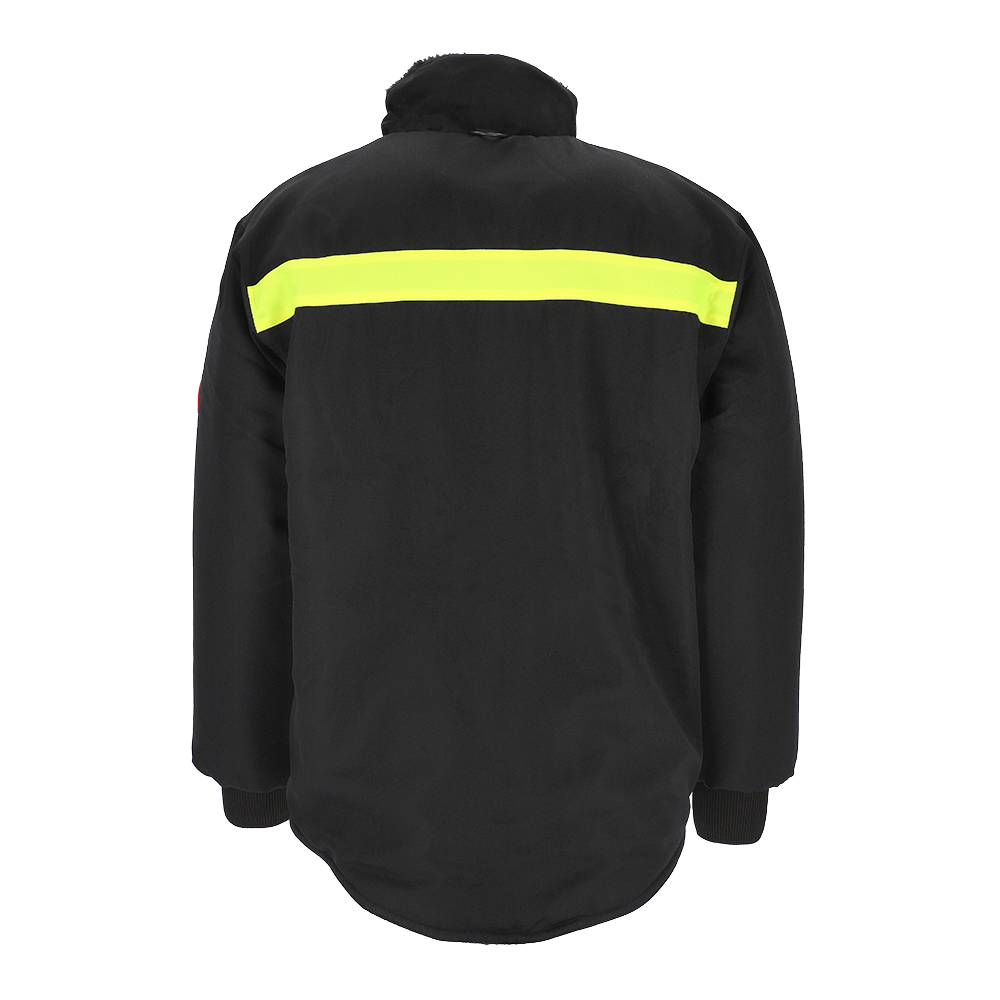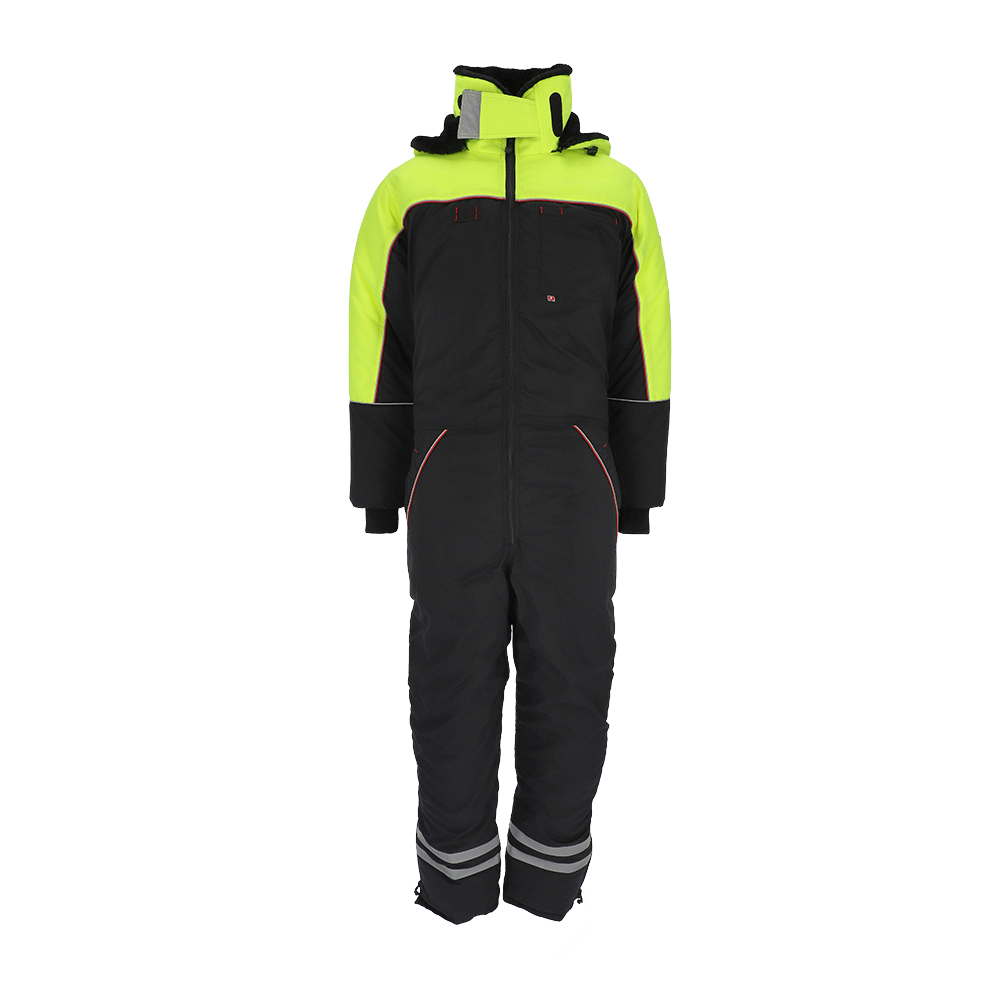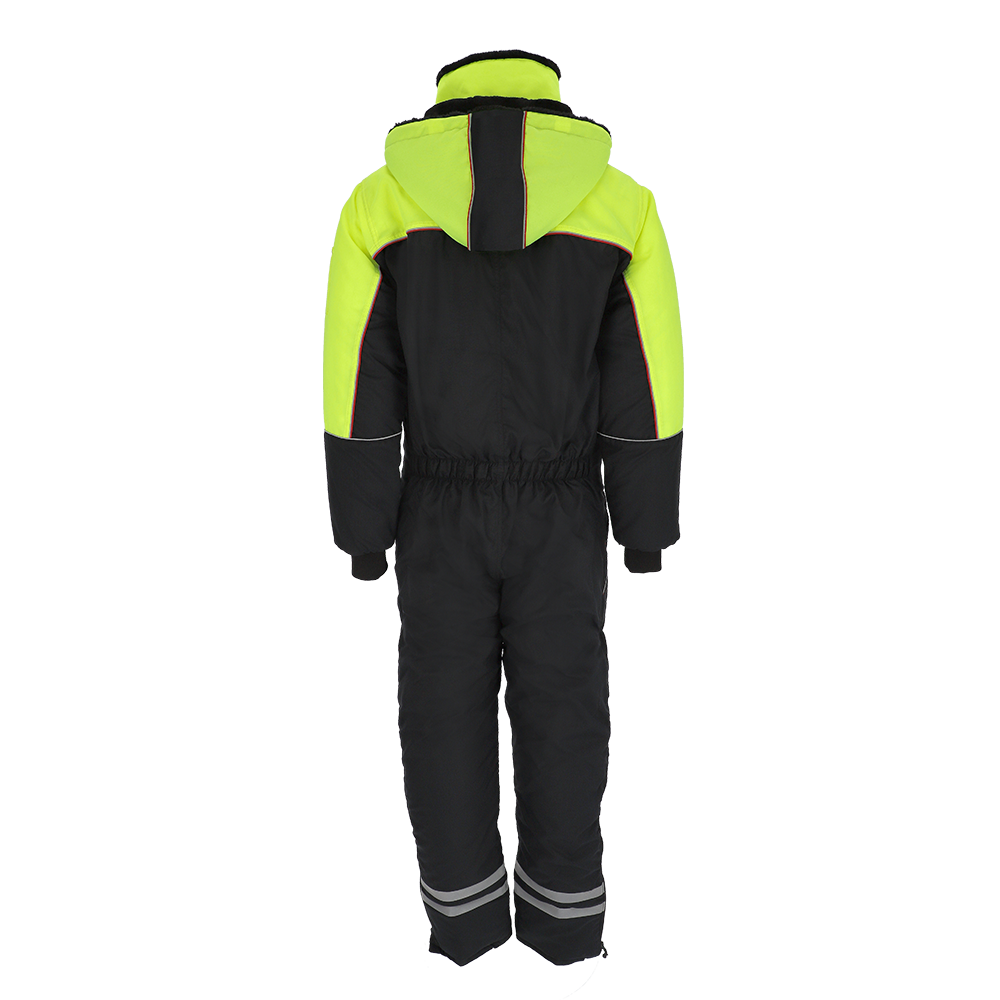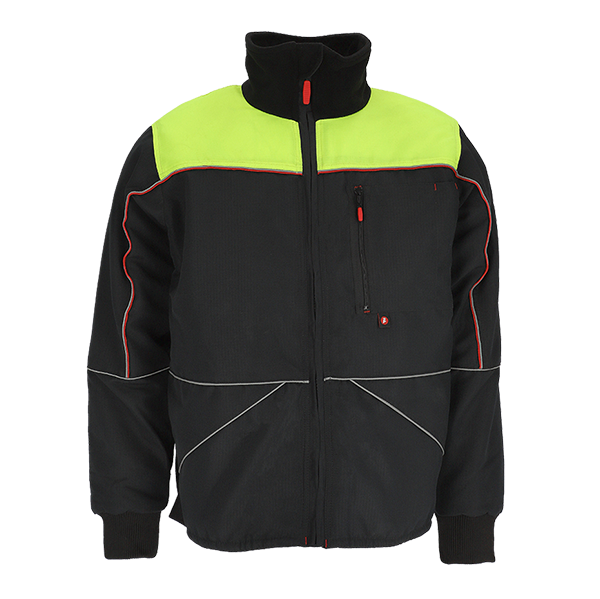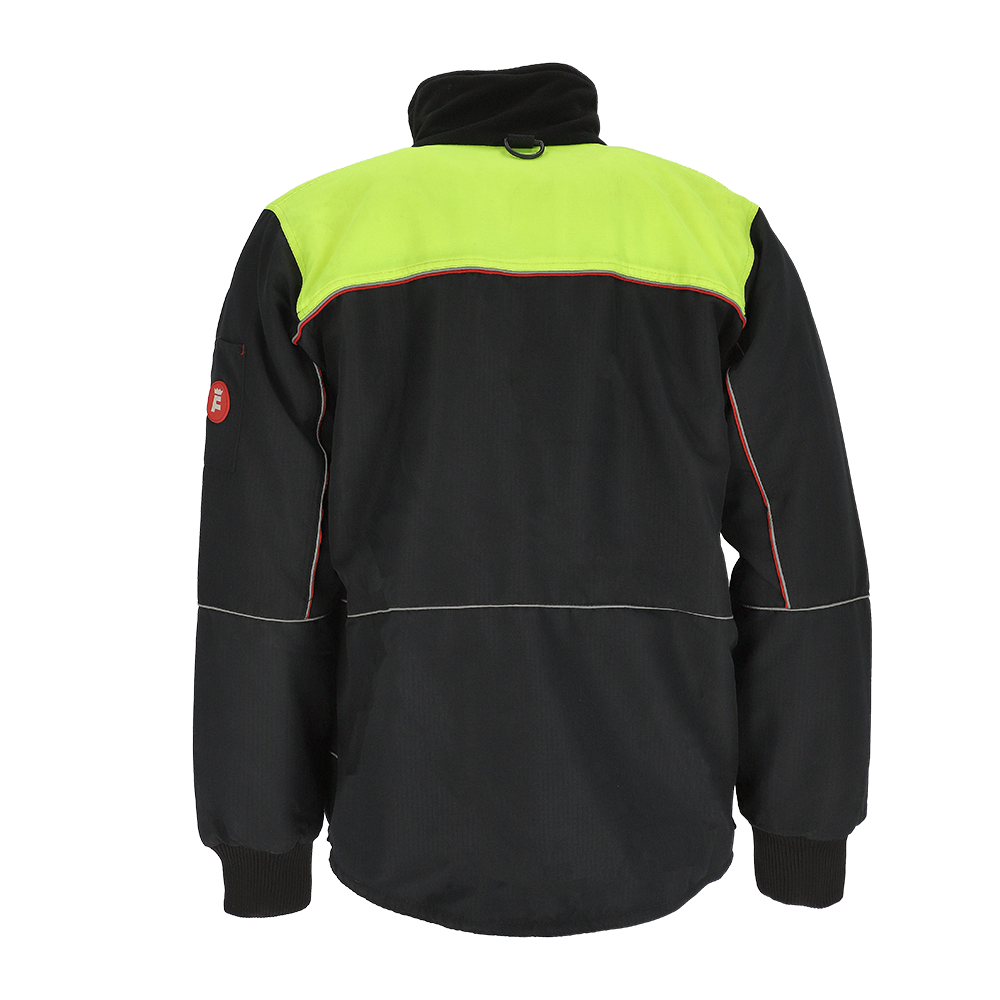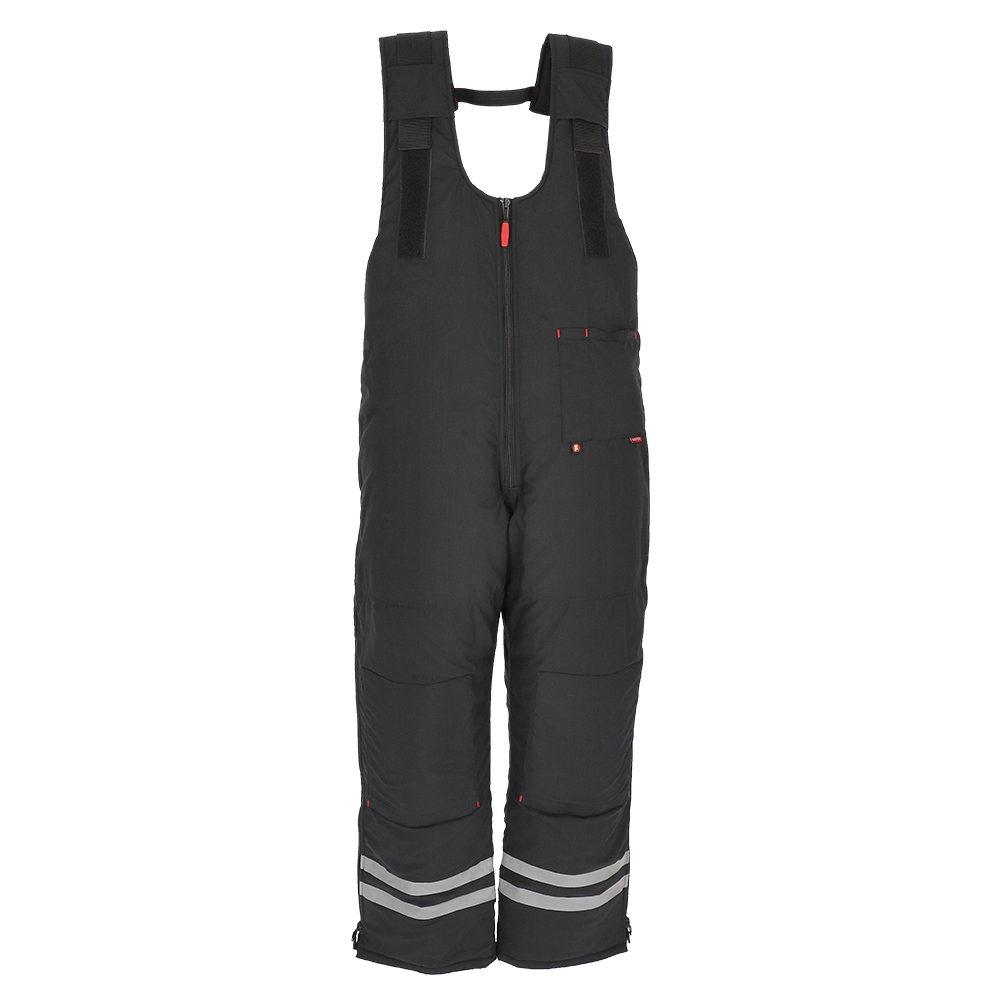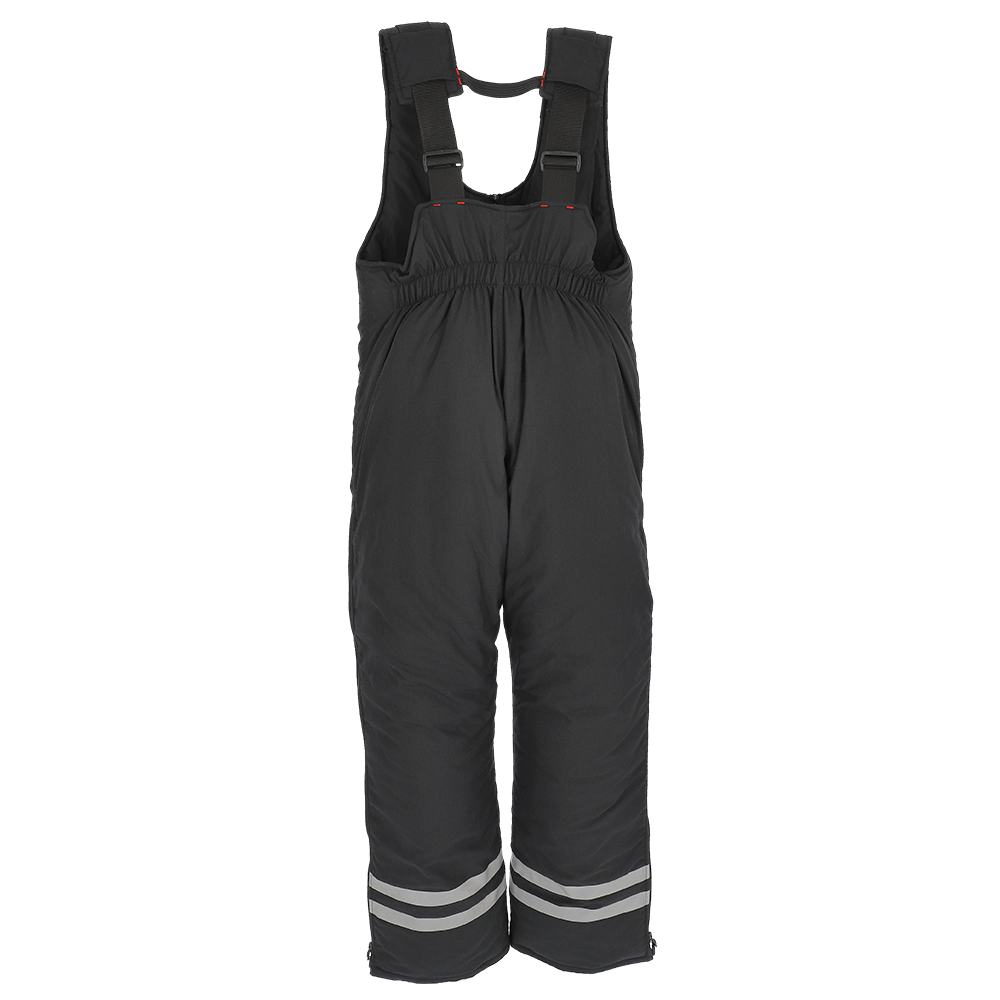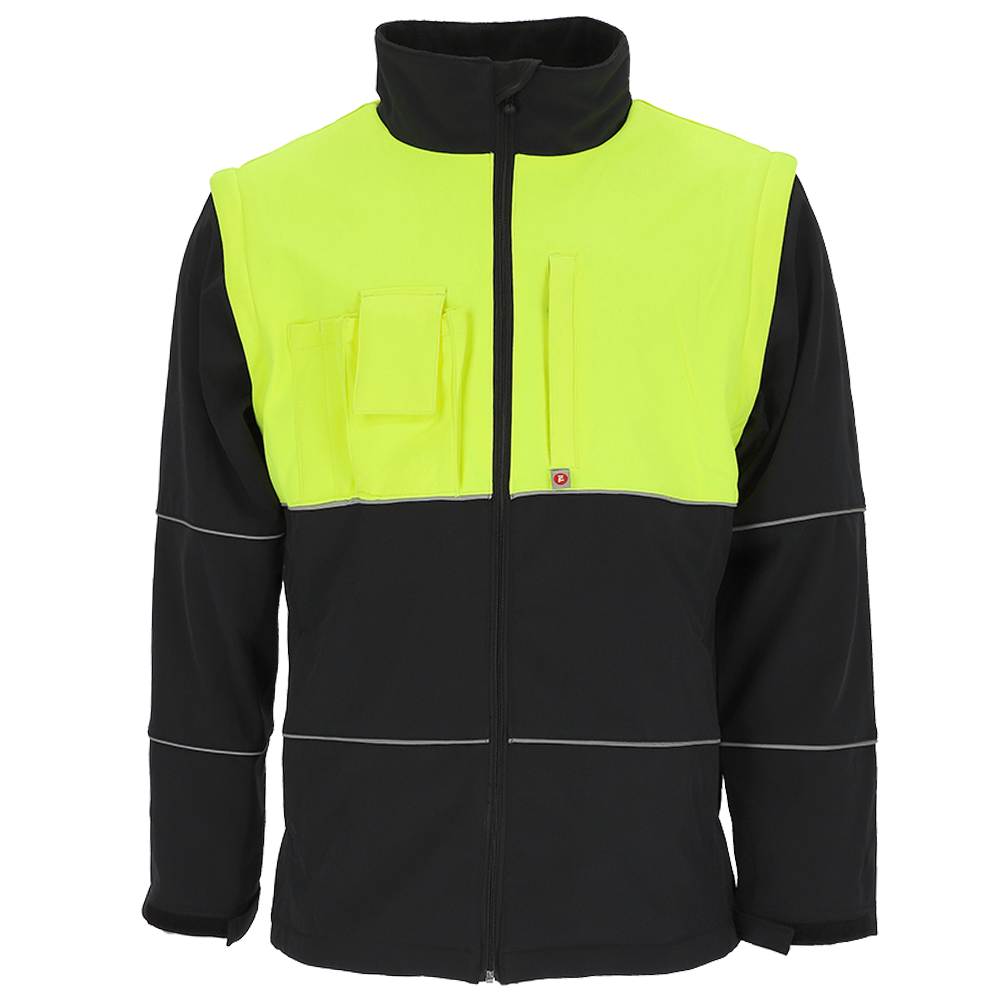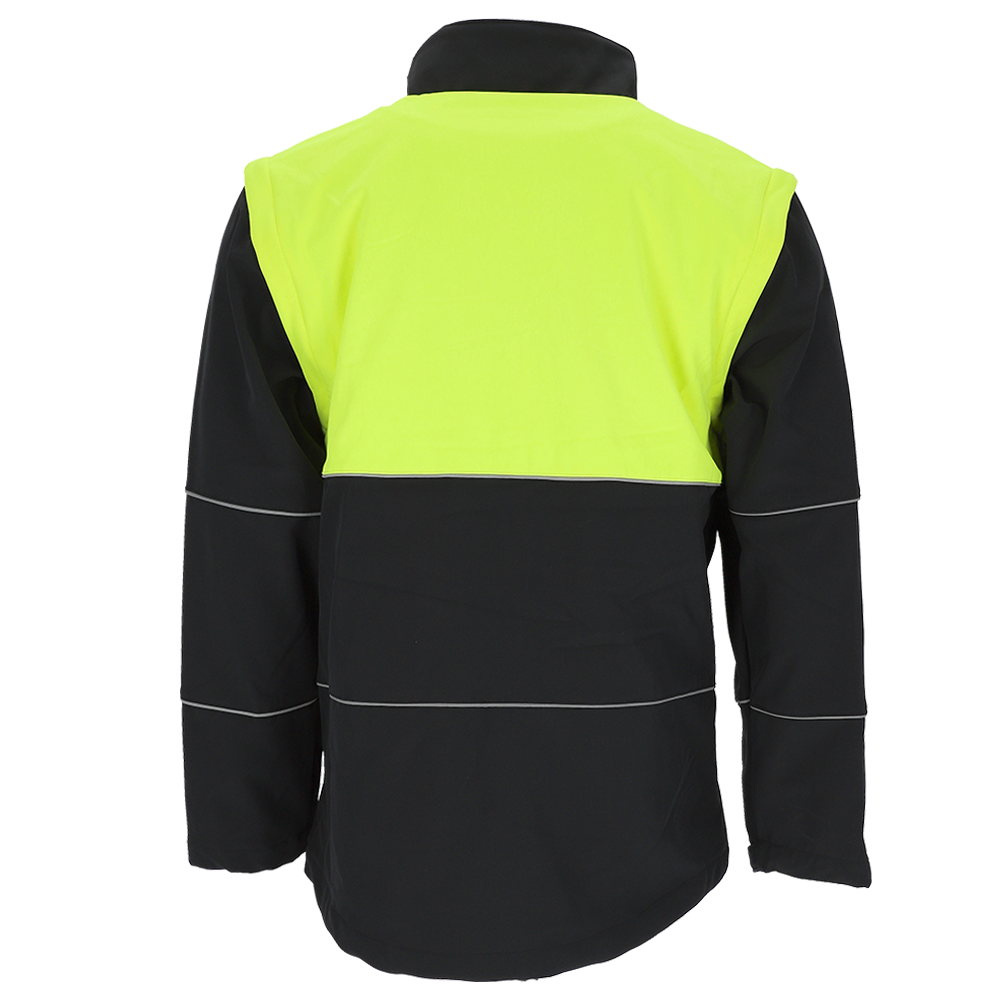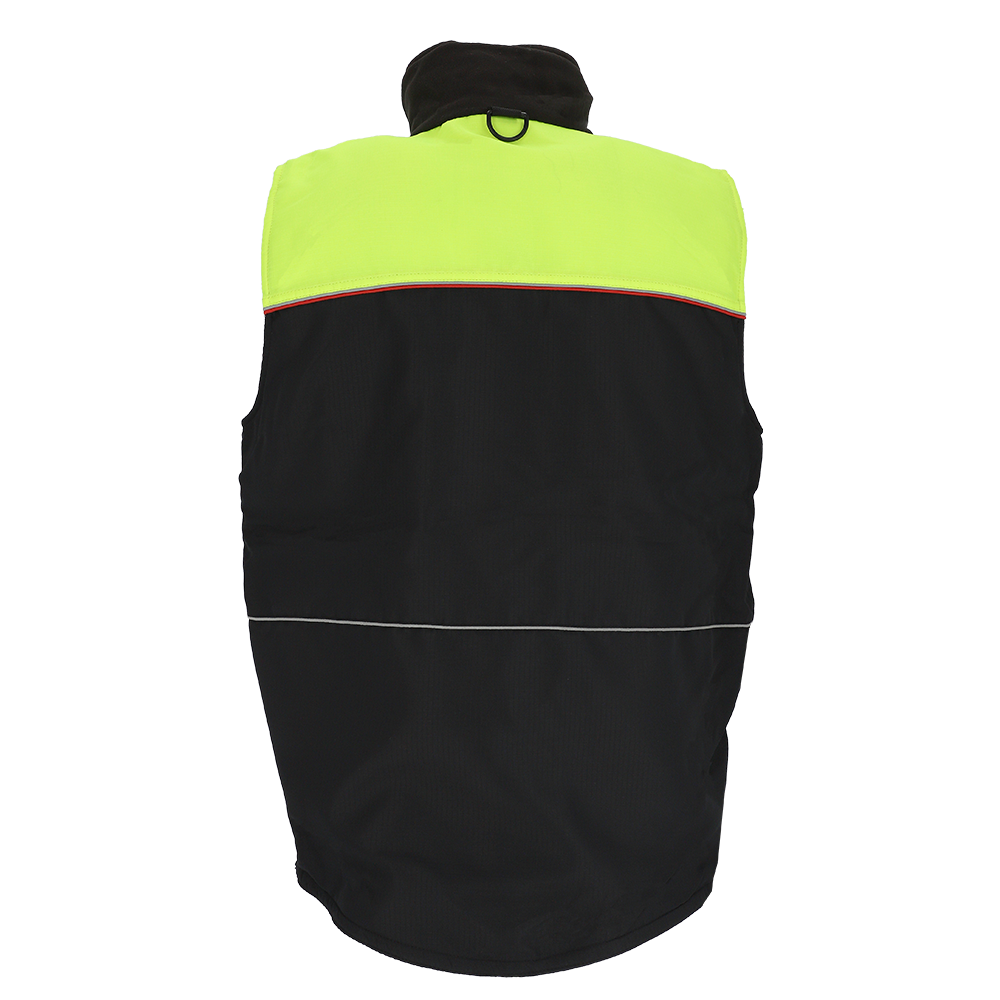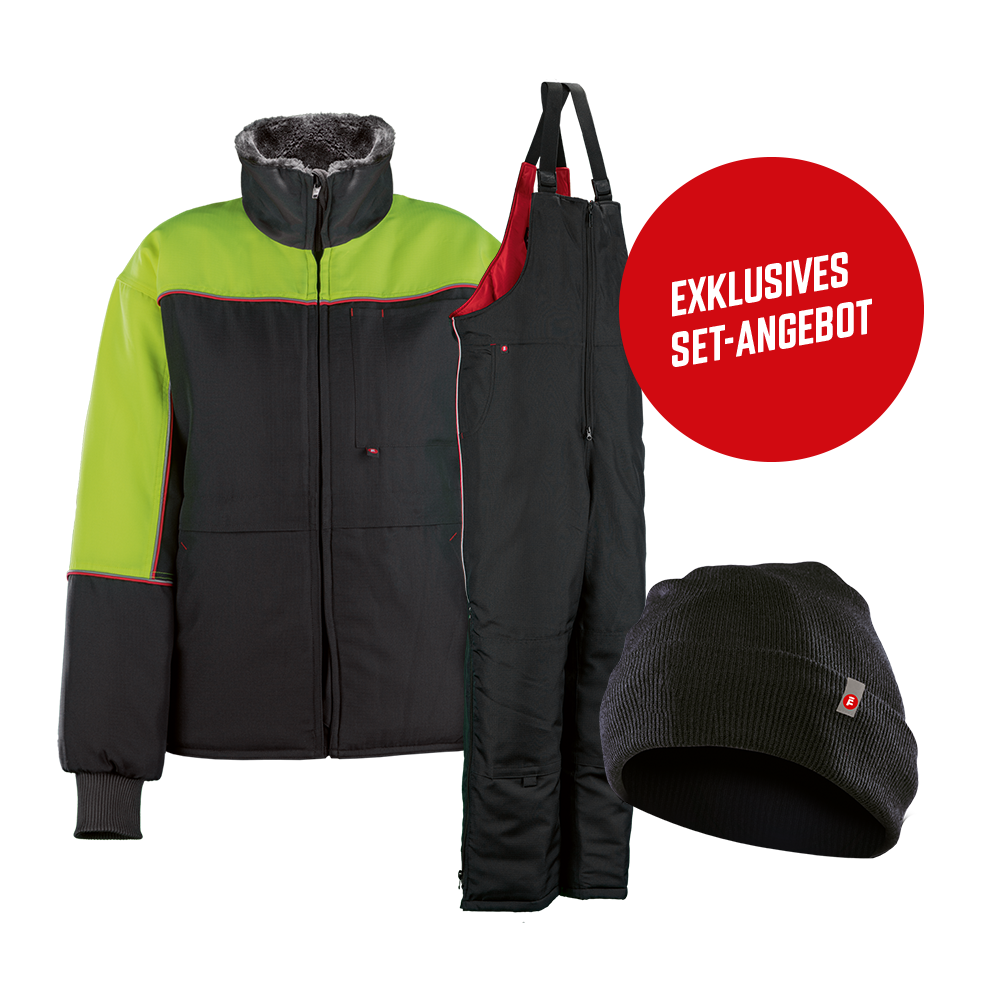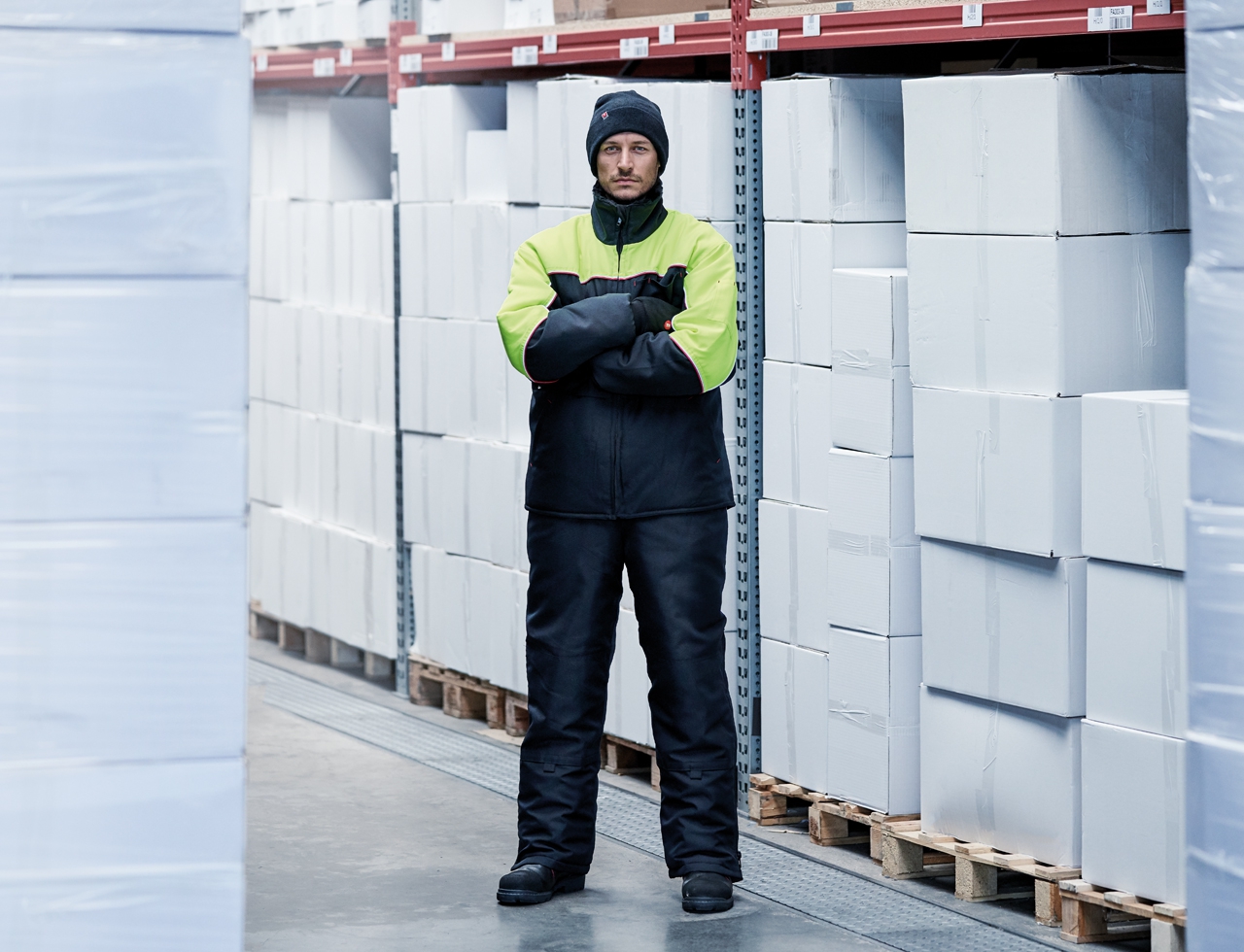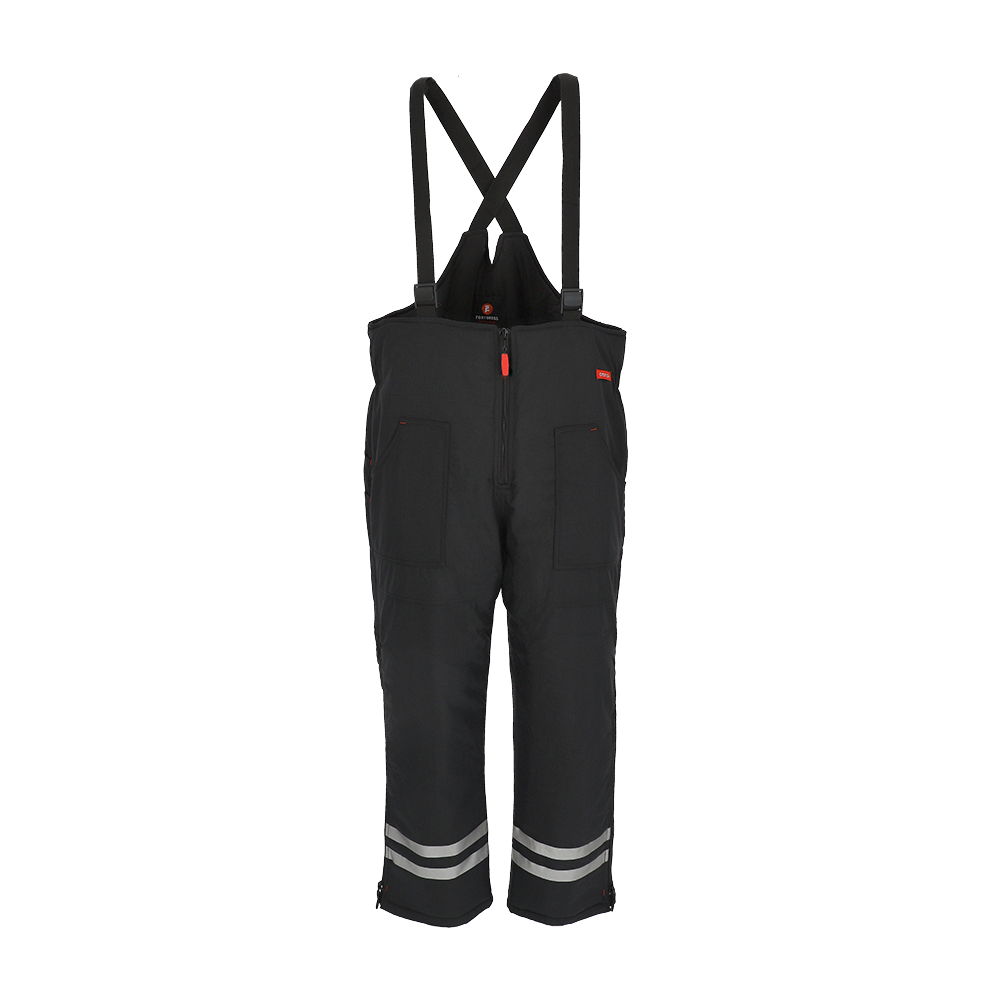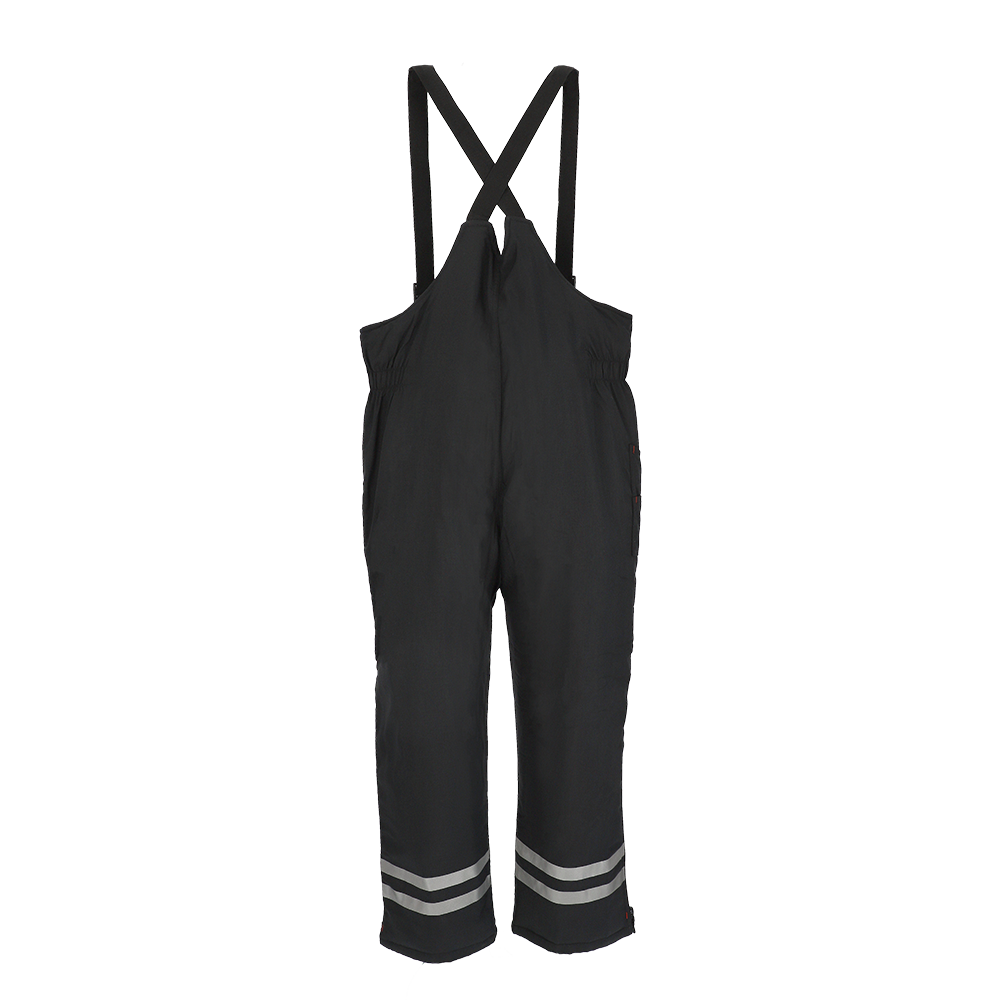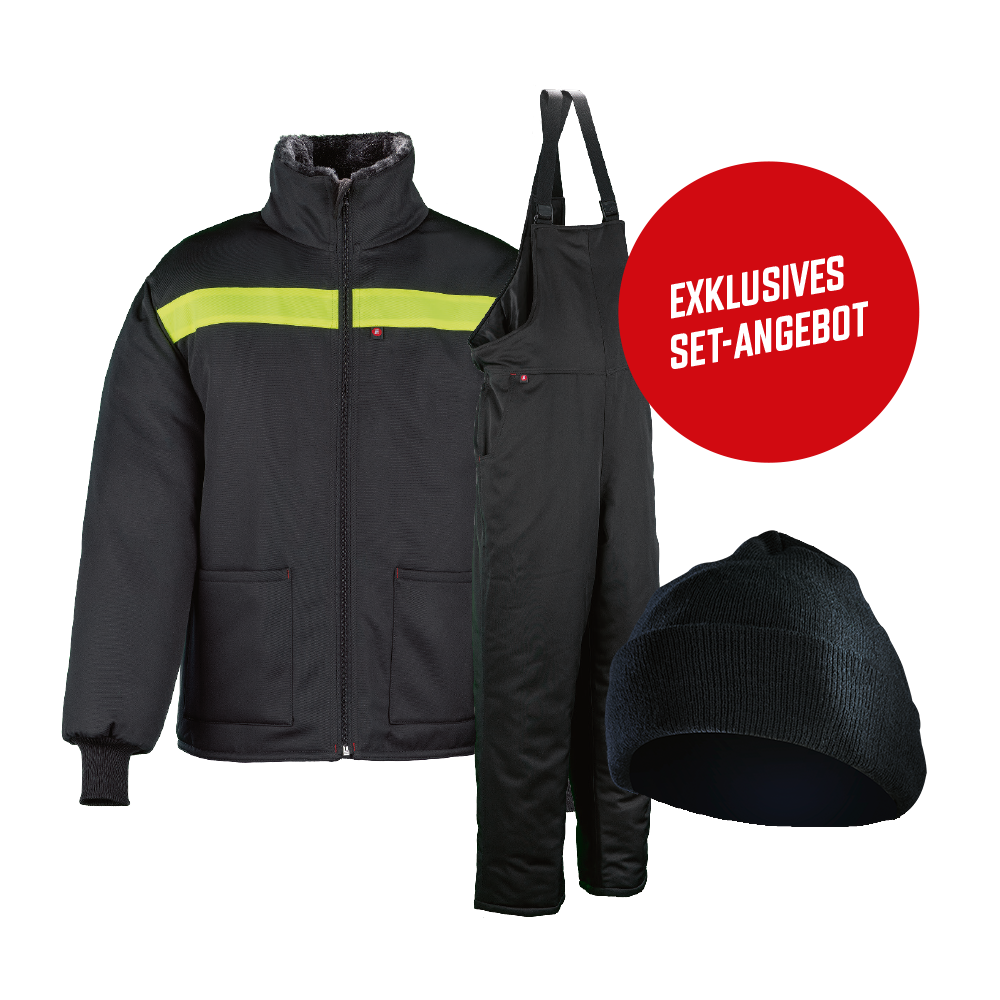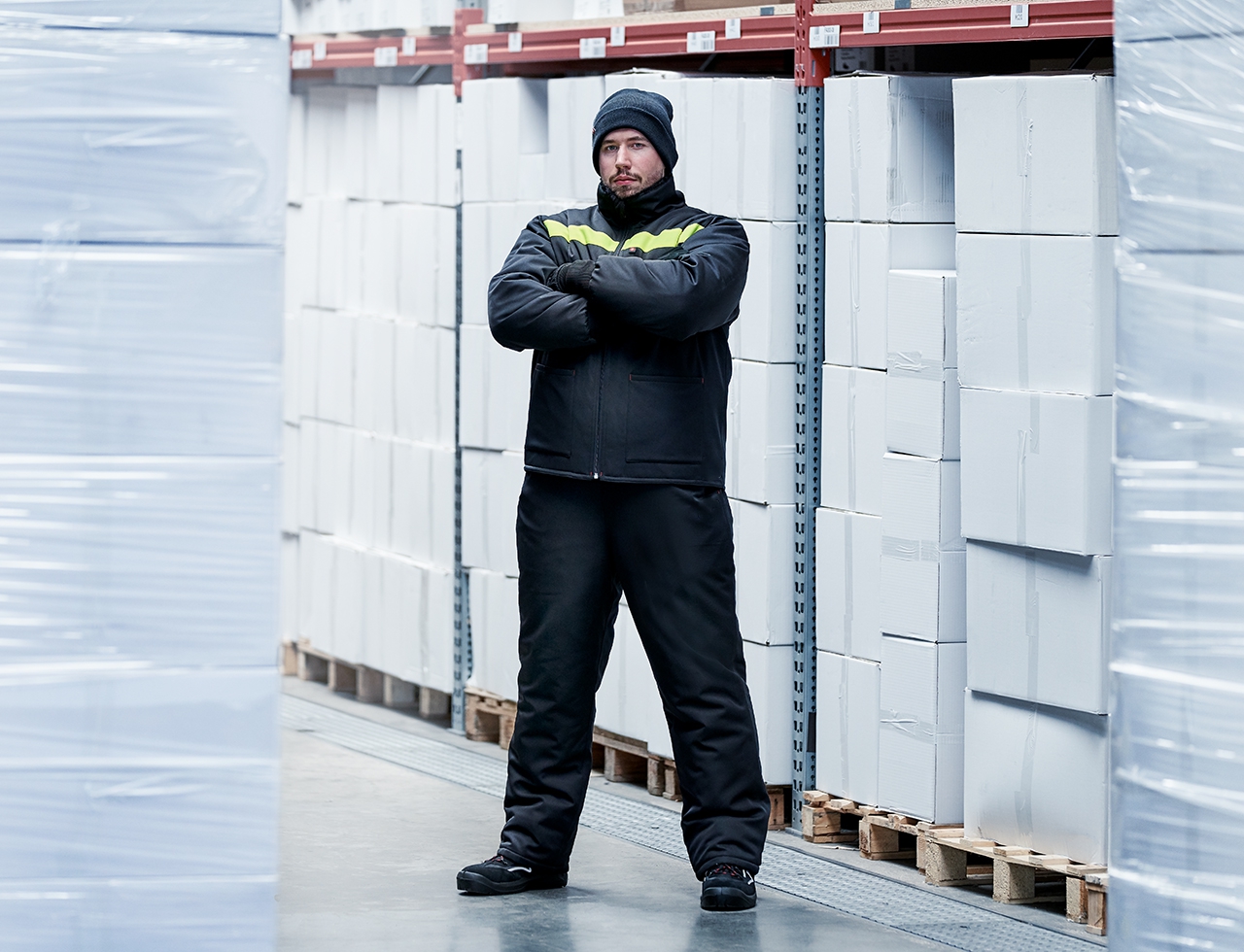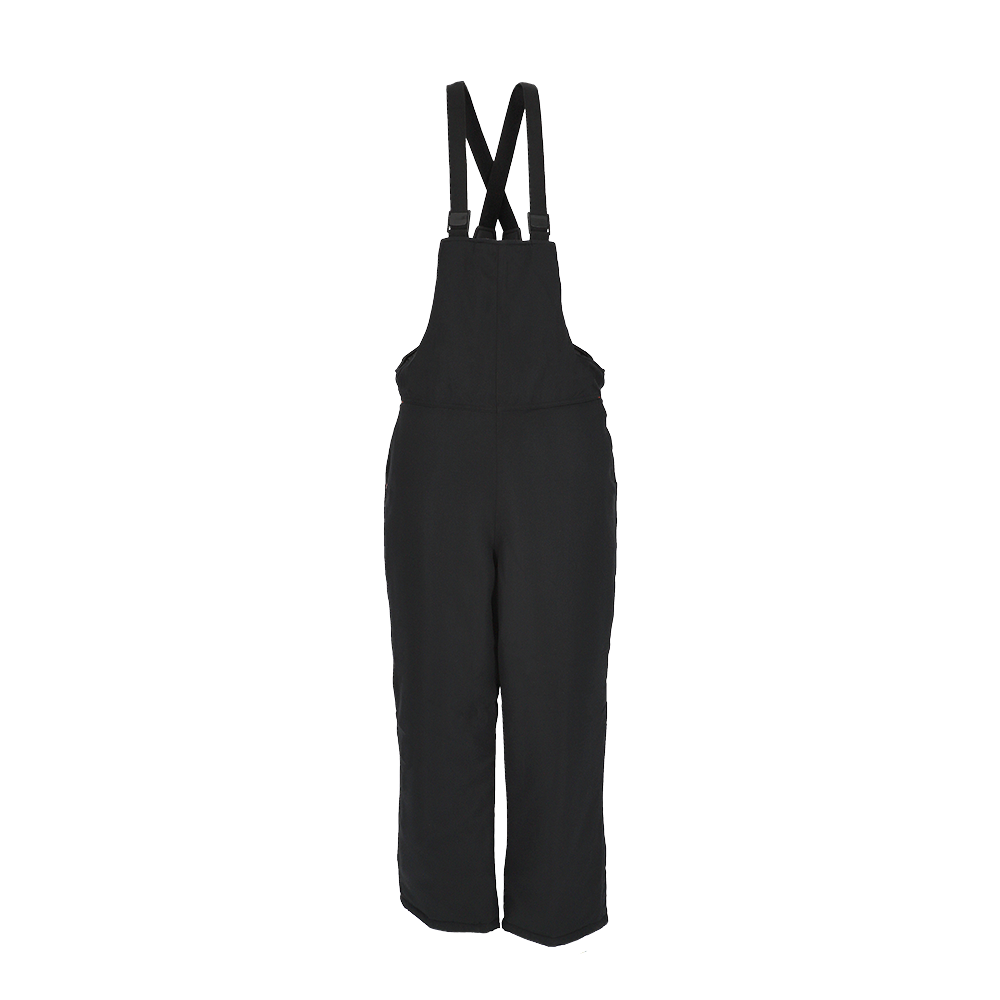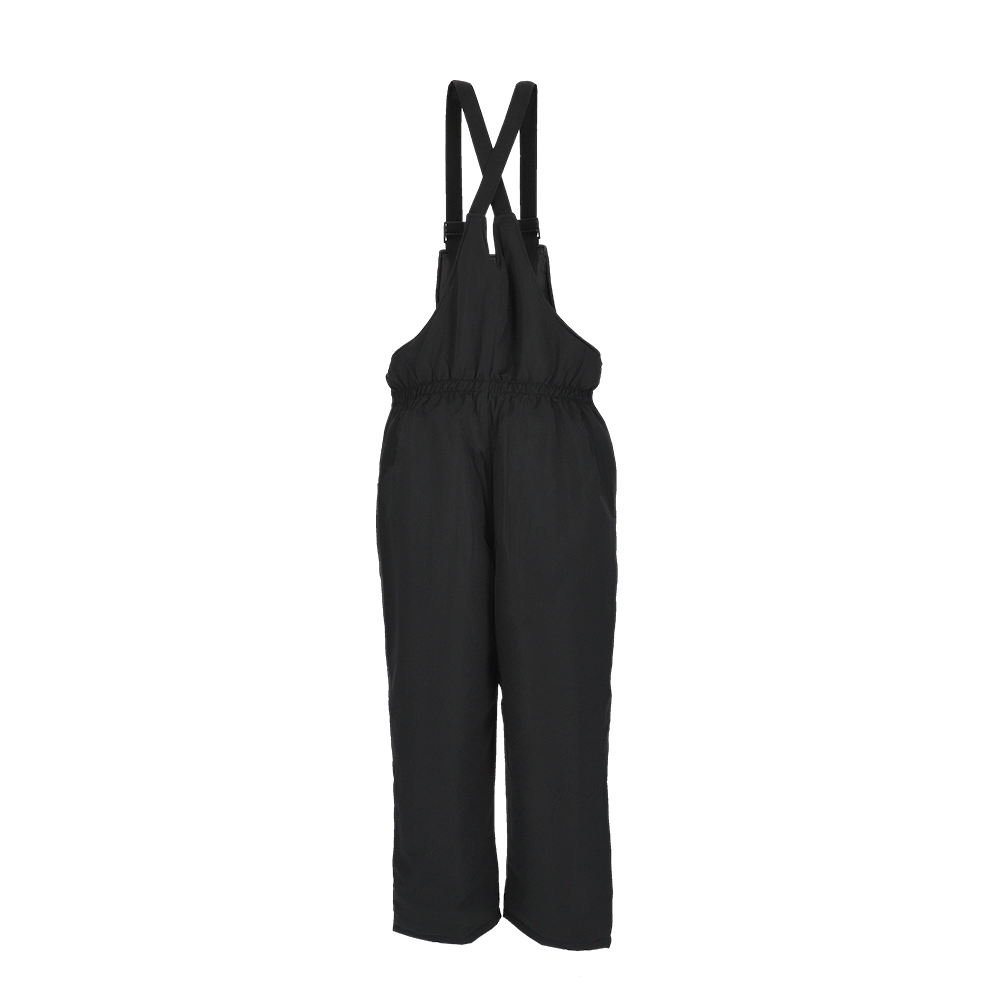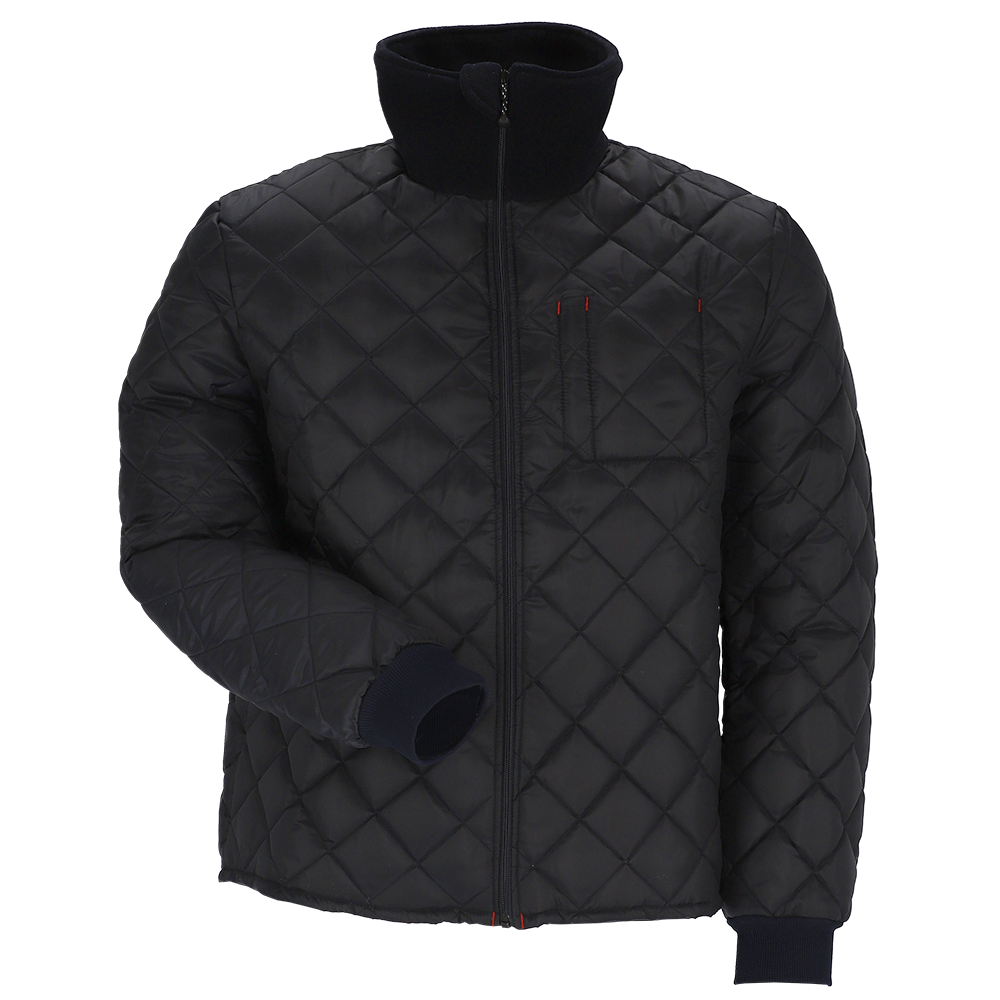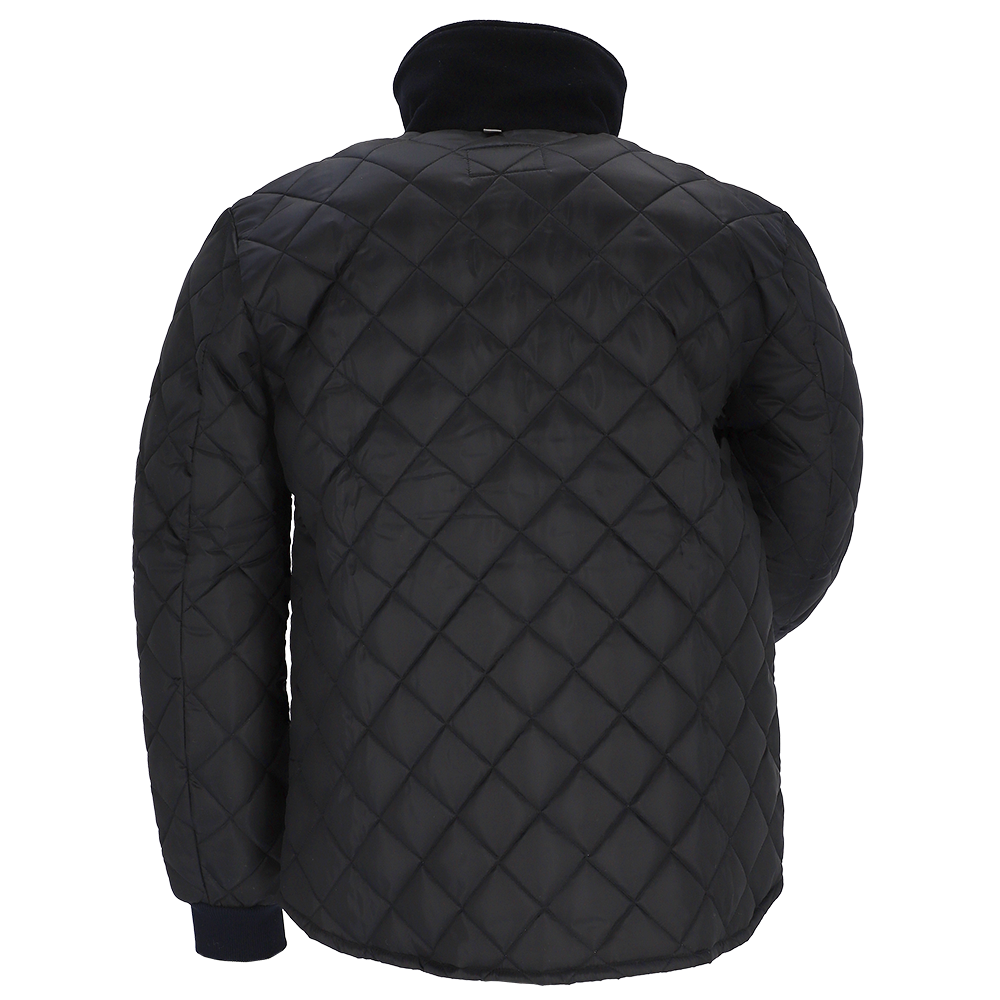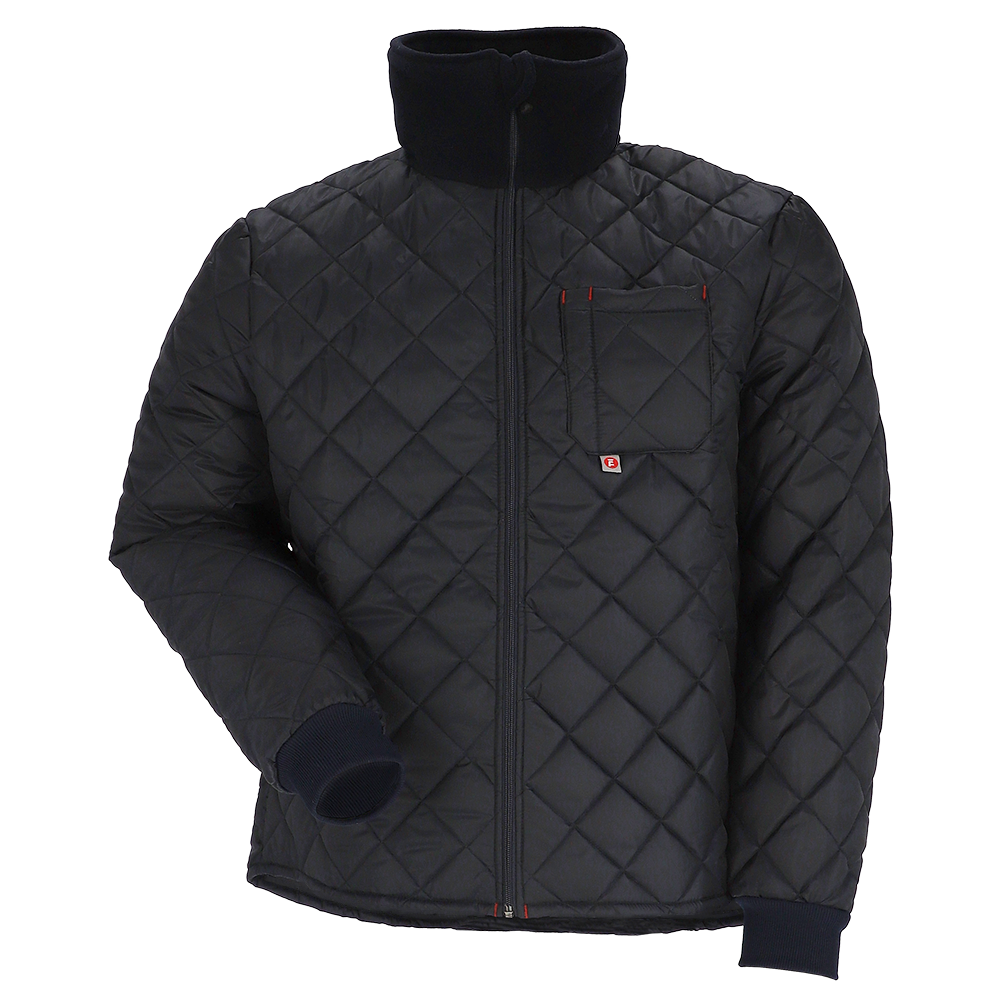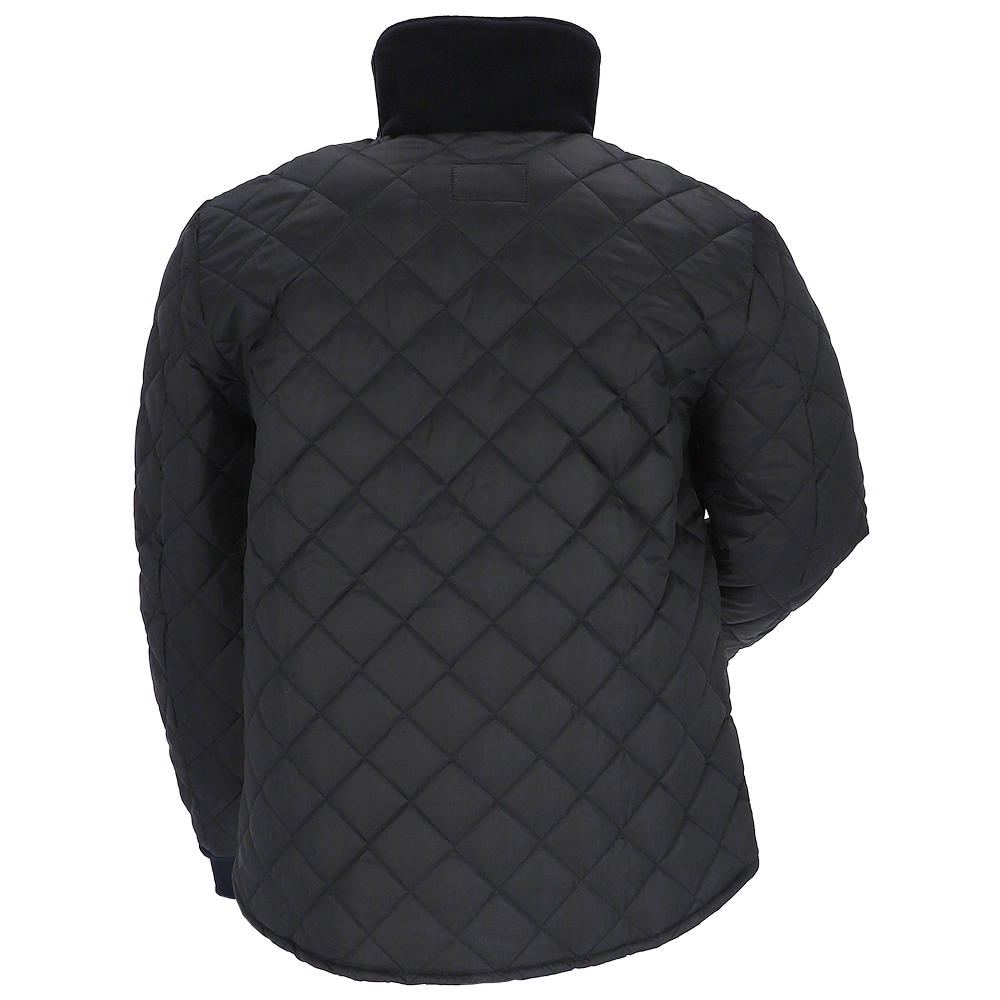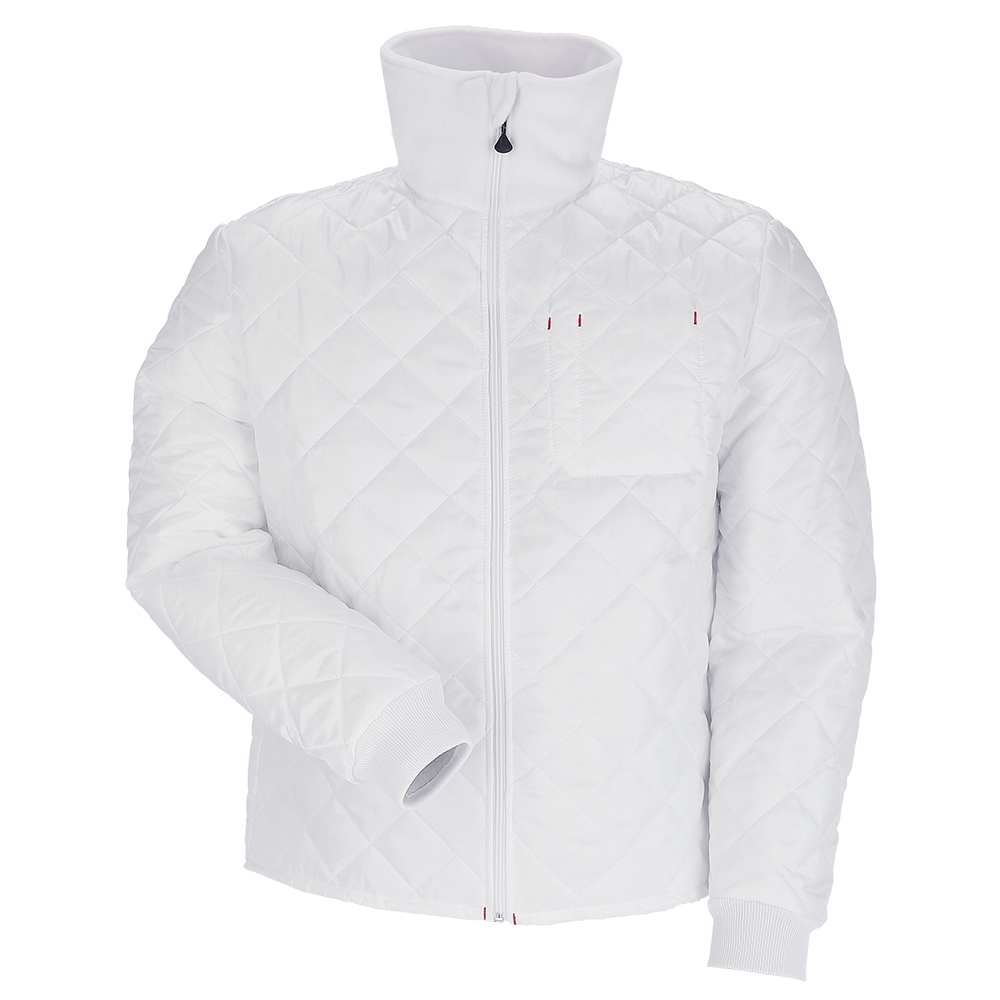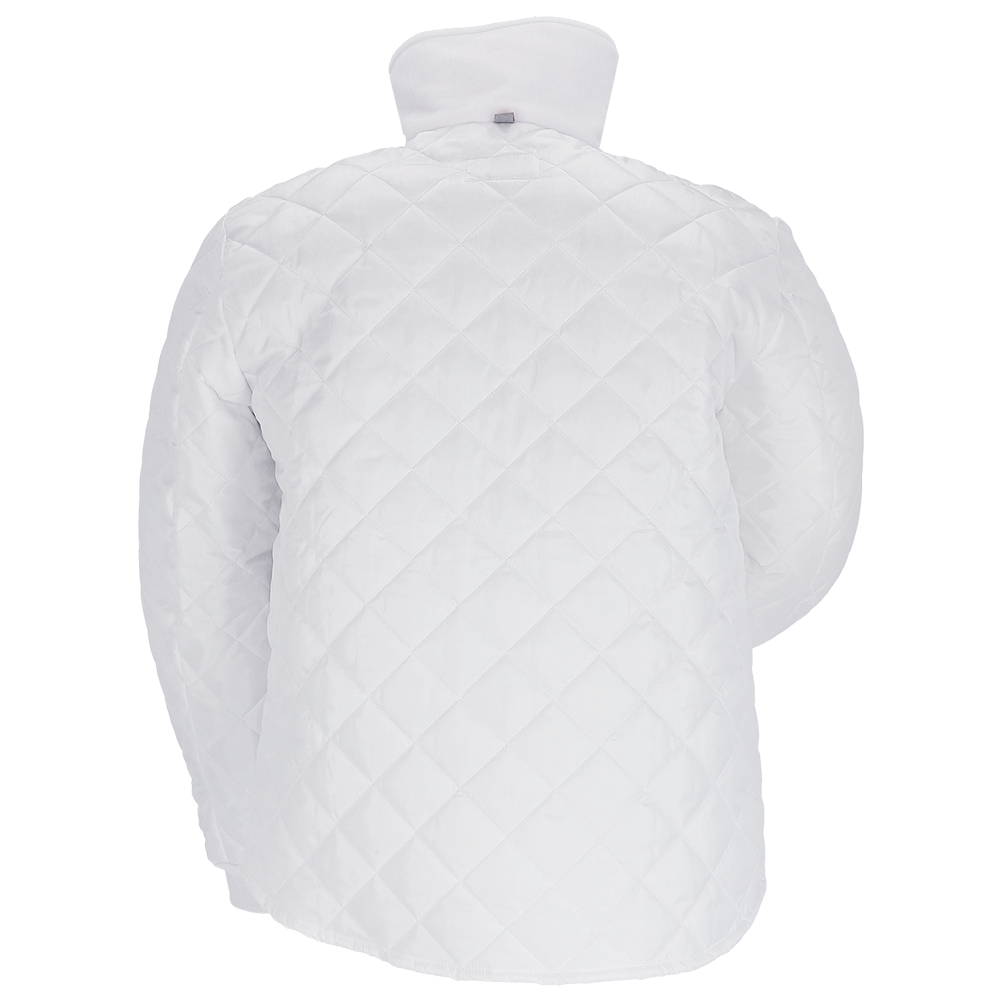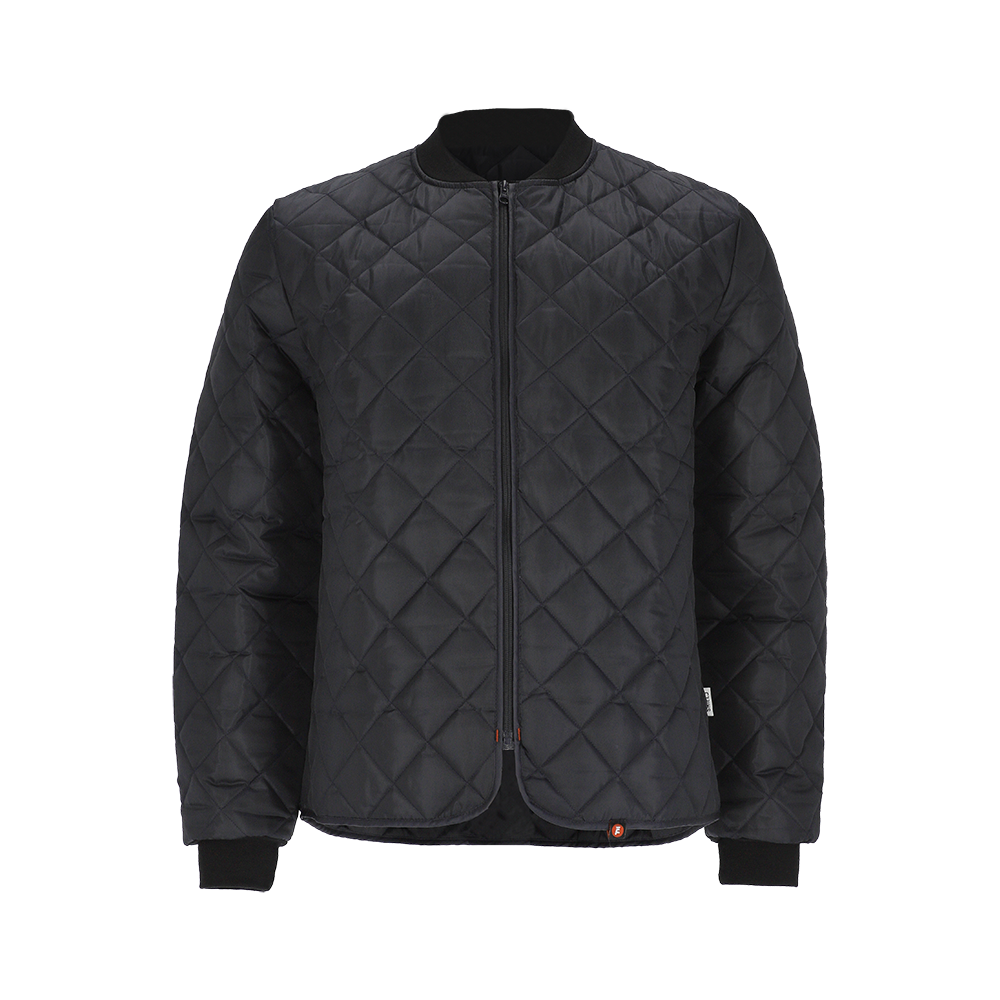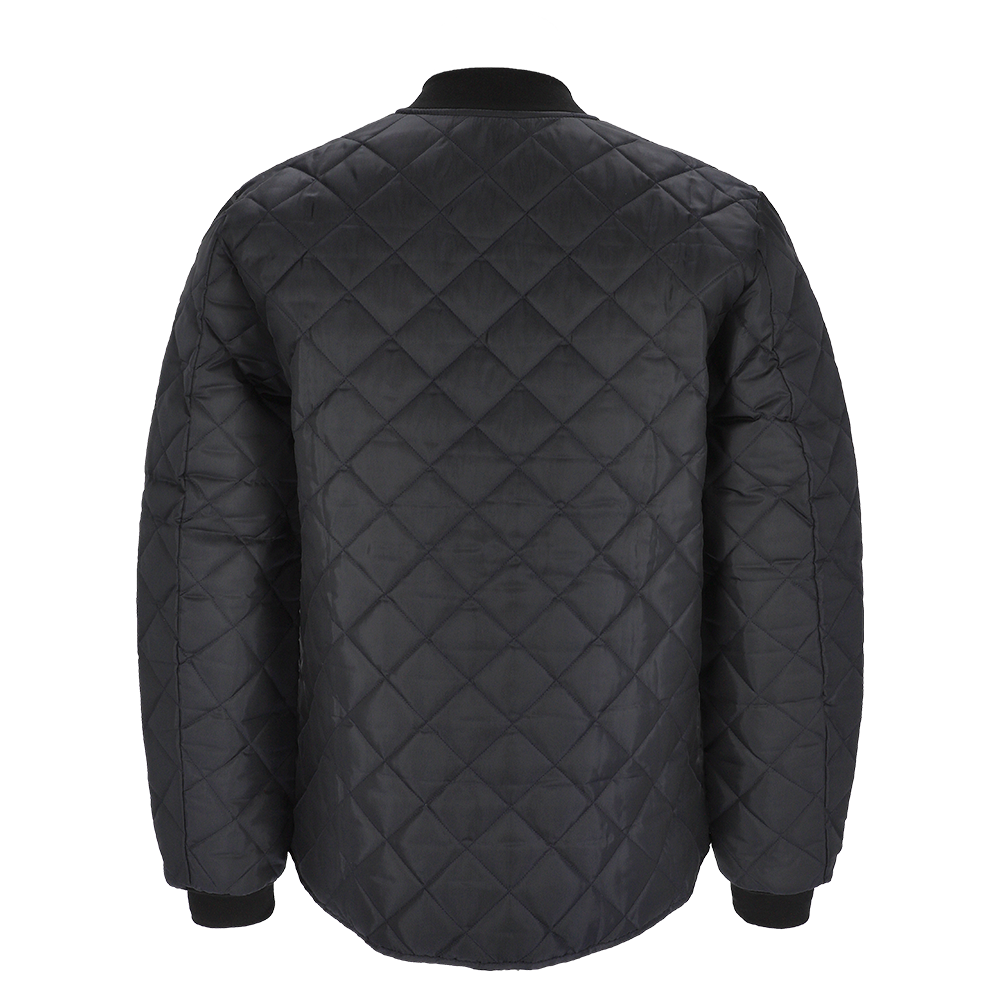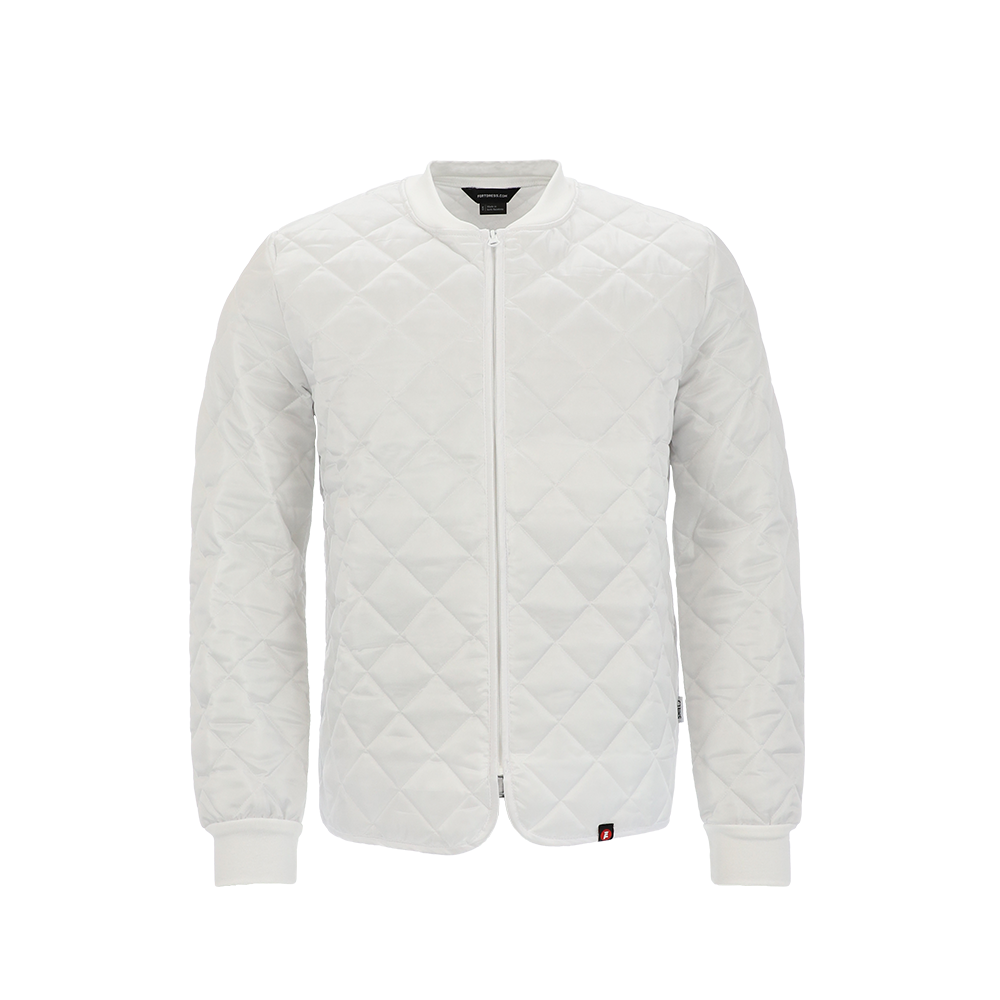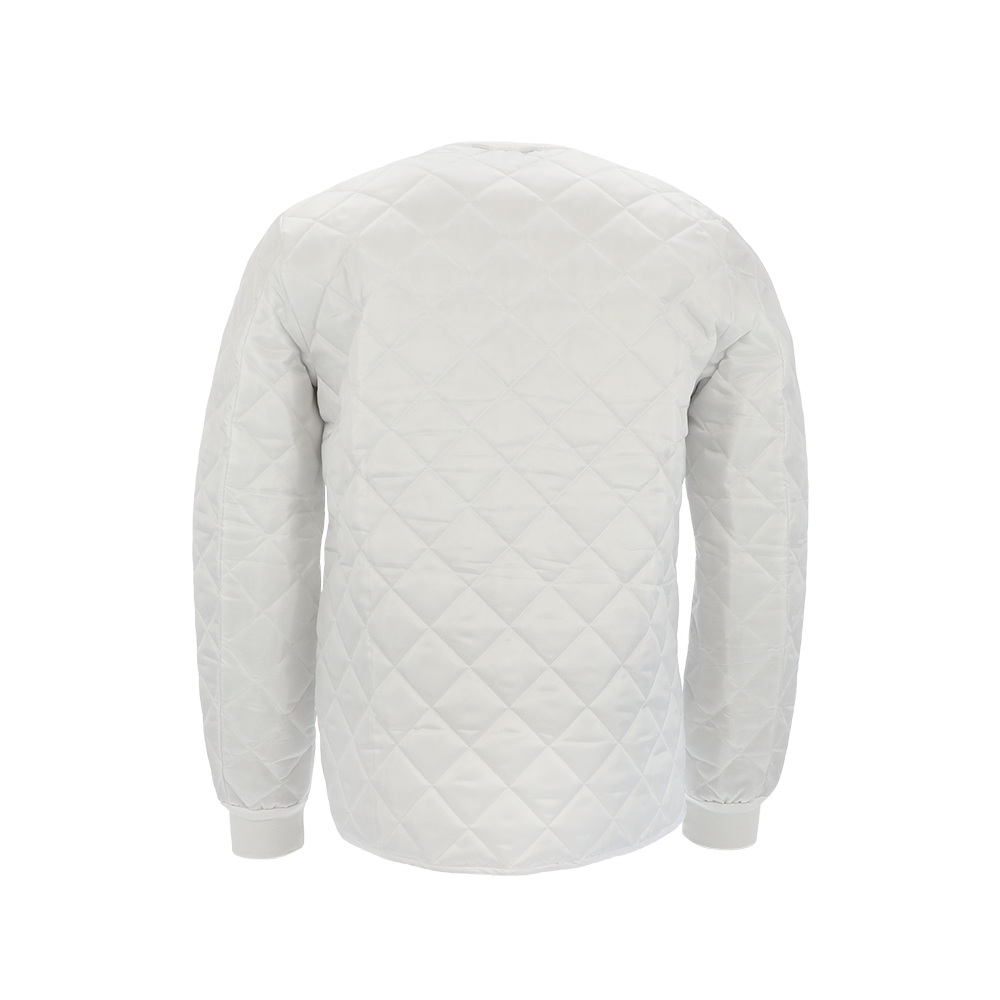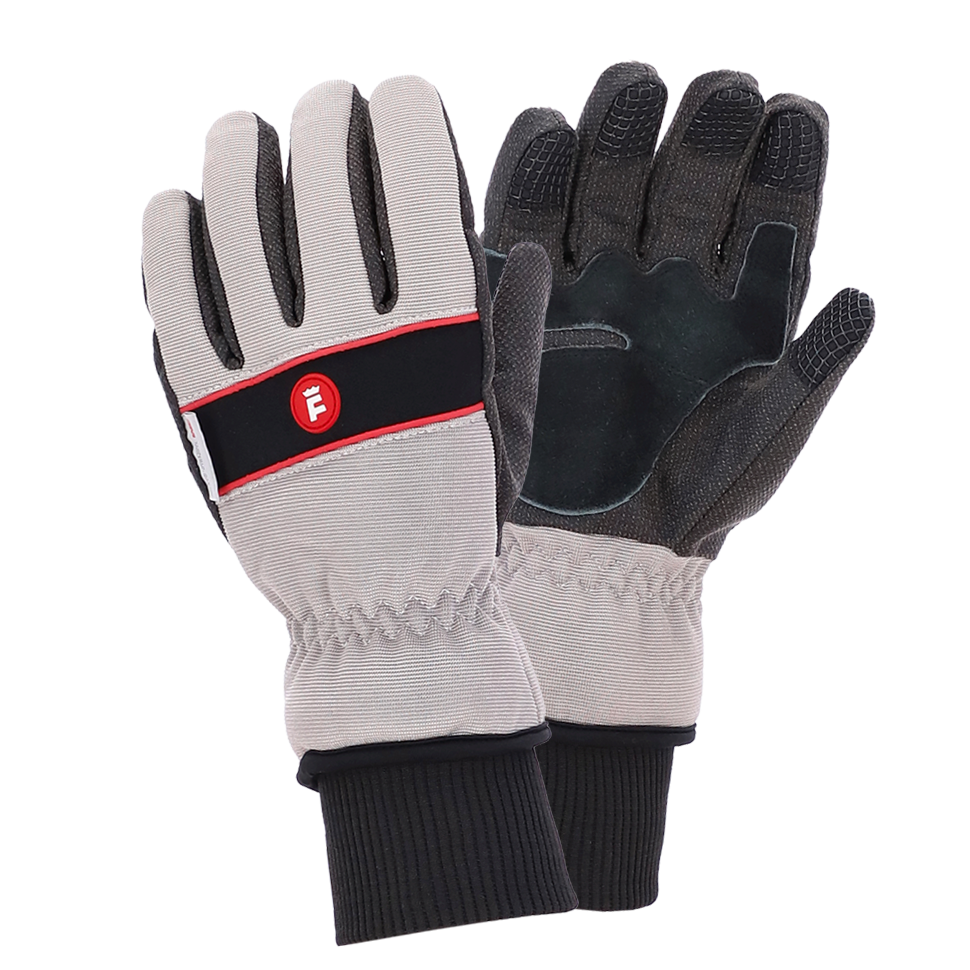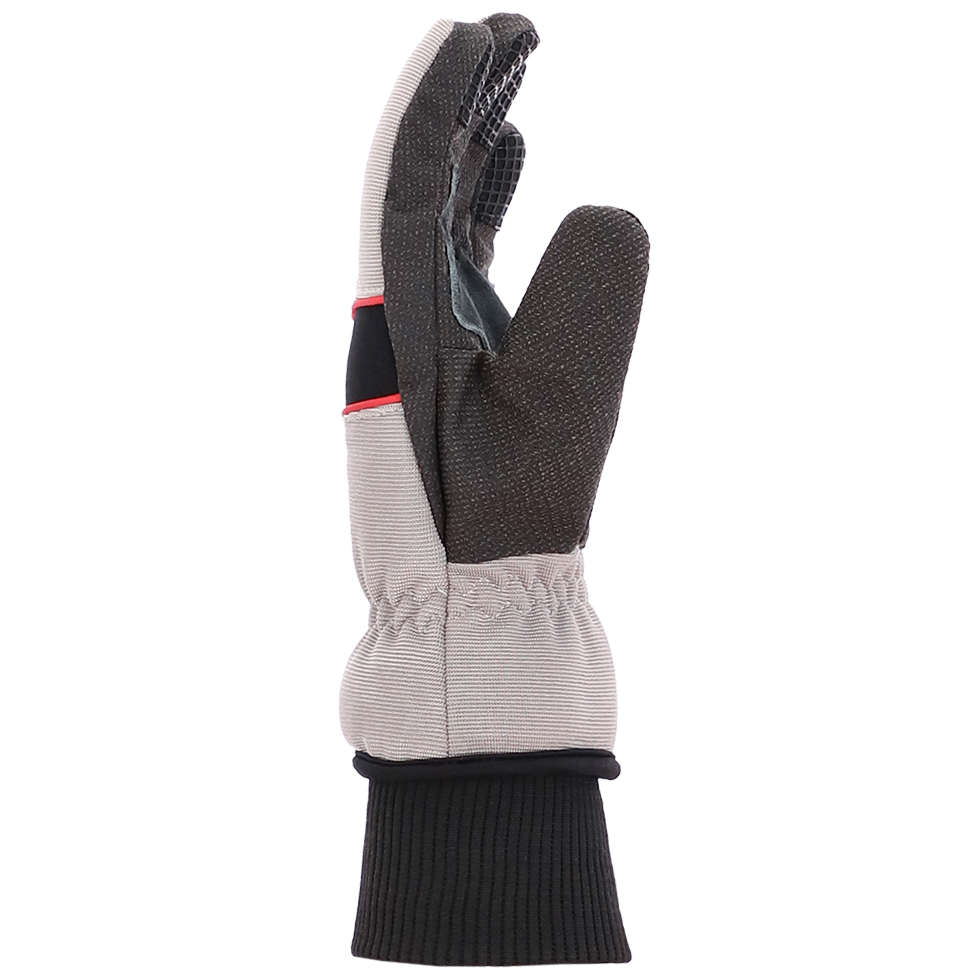



















Freezer Clothing for Working in the Cold.
Working in cold stores requires the right clothing against the cold. Workers need to be adequately protected from the cold conditions. Our products ensure a comfortable feeling when worn in cold temperatures and offer safety when working in cold stores. Fleece, softshell and lightly padded jackets, trousers, hats or gloves in different designs, colours and sizes.
What is a refrigeration workplace?
Refrigeration work does not begin at sub-zero temperatures. Cold work already starts at an air temperature of +15 °C. If a worker is exposed to this temperature in a cold store or a lower temperature for at least one hour at a time, it is called cold work. However, other climatic factors also play a role in the assessment of the respective cold workloads. For example, air humidity, air velocity, thermal radiation, exposure duration, temperature fluctuations, the type of activity and clothing insulation have an influence on the energy balance of workers in cold stores.
For what do I need protective clothing in cold stores?
Freezer clothing is specially designed to work in cold environments for extended periods of time. In many professions, protective clothing is required by the Occupational Health and Safety Act. Special clothing is required for temperatures as low as -49 degrees Celsius. Our certified cold protective clothing protects the wearer from temperatures of 10 °C and below. The European standard EN 342 specifies these requirements and test methods for protective clothing against cold in cold stores or other cold environments.
Which professions fall under the obligation of cold protection?
The cold in the workplace can have various causes. It can be brought on by processes, equipment or weather conditions. Icy temperatures can be indoors, such as cold storage, outdoors or even underground.
Interiors - food industry (production, storage, transport, sales)
- Cold stores
- Meat and fish processing
- Freeze-drying rooms
- Beverage industry
Outdoor areas - depending on the time of year, the following occupational groups, for example, may be affected by the cold
- Structural and civil engineering
- Agriculture and forestry
- Fishing
- Landscaping
- Oil production
Underground
- Mining
- Storage and depot facilities
What health hazards are workers in cold stores exposed to?
Humans are not designed to stay unprotected in very cold environments for long periods of time. Working in cold stores puts stress on the body. Without the proper protective clothing for cold stores and the right warm-up breaks, serious health restrictions can occur.
- Colds
- Recuperation from pre-existing diseases
- Disorders of the postural and musculoskeletal system
- Constricted vessels, slowed blood circulation, trembling, falling body temperature - there is a risk of hypothermia and frostbite.
- Frostbite of 1st to 3rd degree on feet (toes), hands (fingers), face (nose, chin, ears)
- Death of skin and tissue
- Loss of consciousness
- Cold hands and feet impair mobility/ dexterity, concentration and reaction - risk of accidents increases
- Prolonged exposure to cold can lead to chronic diseases of the musculoskeletal system (rheumatism), the urinary organs, the respiratory organs and the vascular systems
All these illnesses only occur when there are inadequate operational protective measures. The employer is obliged to take all precautions to keep the thermal stress for employees in cold stores as low as possible.
What occupational safety measures must be taken in cold workplaces?
The exposure to cold should be bearable for the worker at all times. According to DIN 33403-5, the average skin temperature must not fall below +30 °C. Occupational safety in the cold area is divided according to the TOP principle. First technical, then organisational and finally personal protective measures are taken.
Technical measures - In practice, the first thing to check is that the temperature in operation is not lower than absolutely necessary. Further technical measures can be:
- Setting up radiant heaters
- Use of forklift trucks with heated driver's cab
- Keep air velocity as low as possible by means of air routing systems
- If necessary, provide facilities for warming hands and feet (hot plates, hot air devices).
- Set up possibility to dry clothes
- Set up escape door
- Emergency call function from -10°C and area larger than 20 m²
Organisational measures - Working time in the cold area should always be kept as short as possible. If long stays cannot be avoided, special break and warm-up times should be observed. Further organisational protective measures can be:
- Depending on the cold area, various warm-up breaks must be taken in addition to normal breaks
- Break rooms must be heated, dry and draught-free, minimum temperature must be 21°C
- When working below -25°C, the maximum employment time is 8 hours and not longer than 2 hours at a stretch
- Occupational health screening, checking cardiovascular system, respiratory organs, nervous system, skin, joints and kidneys for suitability (compulsory from -25°C, recommended otherwise)
- Provide hot drinks
Personal protective equipment – Cold weather protective clothing must be provided by the employer. The employee does not have to bear any costs. The personal protective equipment (PPE) should meet the requirements of DIN EN 342 or DIN 33403-5. It is selected according to the prevailing temperatures, the type of employment and the dwell times. The air velocity, the posture and the energy expenditure of the employee as well as temperature changes also play a role in the choice of PPE. The following properties of cold protective clothing are recommended:
- Temperature insulating capacity
- Breathability
- Waterproofness
- Heatability
- As light as possible
- Equipped with reflectors
- With zips (for quick on and off)


